Cover Art by Neville

January 15th 2015
Mouth of The River page 14
Publication of Oyster River High School
M 02
Caulfield
for: “What’s Really Affecting You” on
Dear classmates, The following is a farewell from me, as your peer, friend, and Mouth of The River’s Co-Editor in Chief. I’m graduating at the end of this semester, leaving ORHS, and moving in with some friends in Boston, with no real return date. Early on, this decision was an obvious one, and the choice became apparent around this time last school year. I’ve always felt like school wasn’t the place that I flourished. Sure I’ve found many interest ing and valuable aspects of my time here at ORHS, but it was obvious to me that my real progression as an individual has been outside the walls of this school.



I originally toyed with the idea of living in Utah with a couple friends, but after some incredible opportunities presented themselves to me here, I decided my ski bum dreams would have to take a rain check. In Boston, I’ll be working as a freelancer with the production studio Jamtron. I’ll also be spending a good chunk of my time in New York City, shooting photos and video for William & Park, an online magazine pertaining to design, art, and culture.


I’m unbelievably excited to begin the next step in my life, yet I’m reluctant
to leave my close group of friends here in Durham. It’s true, high school flies by (as all my fellow senior classmates can attest to), and it’s important not to idly let these years pass. If I could give some advice to my freshman self (and all other underclassmen at ORHS) it might go as follows:
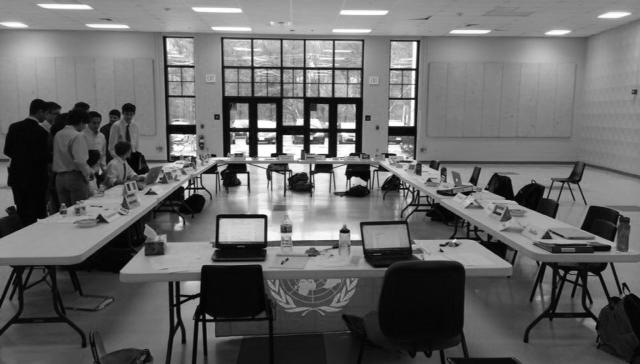
Try to seek out your interests as early as possible. Arrange your time and academic schedule to excel in these areas, study things that engage you and spark your interest. I know you’ve probably heard that countless times from parents and teachers, but no one will discover your passions except you. There are opportunities in this school that just require a little bit of moti vation and self-direction, just capitalize on them as early as possible. Don’t allow time to pass by as you go through your days jumping through hoops. Have direction, be critical of yourself, reflect on what you’re doing, and try to find something you love and learn all you can about it.
For me and many others, Mouth of the River was one of these opportunities. As part of last year’s Mouth of the River staff, as well as the first semester of this year’s, I have no doubt that it was the most valuable thing I have done in high school. I’m going to miss the staff, Mr. Kelly, and helping to put out Oyster River’s journalistic publication. Sadie Moore will be taking over as sole
and teachers
killer high school experience.
NEWS FEATURES OP~ED SPORTS/CLUBS WHAT’S IN THIS ISSUE LETTER FROM THE Find us at Twitter: @MORnewspaper Email: mornewspaper@gmail.com Website: mornewspaper.com The Truth About Teen Sexting...3 Oyster River Stressed...4 FroZone...5 The Secret Behind A Good App...6 Name That Cat...7 Living With Crohn’s Disease...8 The Coffee Hype...10 Apres Oyster River...12 What’s Really Affecting You?...14 Three of 2014’s Best Albums...15 Channel Your Inner Flannel...16 One Giant Leap...17 Where do People Still Drive Cars?...18 #No Filter...20 What Colleges Really Want...21 How to Help...22 Who Am I?...23 Winter Sports Bios...24
New Club On the Block...27 EDITOR 02
Editor in Chief, and I can’t wait to see what she and the rest of the staff create in future issues. Au revoir to my homies
- it’s been a
-Sam Colby
NaNoWriMo...26
The Truth About Teen Sexting

With so many adolescents having smart phones with access to texting, so cial media apps, and the internet, “sexting,” or sending sexually explicit pictures and messages, has become commonplace. What many people, es pecially teenagers, do not realize is that sending or possessing nude photos of someone under the age of 18 is against the law.
“If people are taking pictures of themselves naked and they’re under 18, it’s child pornography. If the police want to push the law they can charge you as a sex offender, and you’ll be registered for the rest of your life. Why would you want to take a naked picture of yourself and put it on a device in the first place? You shouldn’t put anything online that you wouldn’t want your parents to see,” said Brian Zottoli, a social studies teacher at ORHS. According to DoSomething.org, 17% of teenagers who sext share the mes sages they receive with others around them, meaning that if a girl were to send a private photo to a boy of her body it could very likely be shared with his friends as he’s opening the message. Knowing these statistics is proba bly reason enough not to send explicit photos. Ethan, a senior boy, received explicit pictures from a girl in his grade, and after viewing them himself he shared them with many of his friends during school (names have been changed to protect the identity of the source). “I regret sharing them [the photos] when the person means a lot to me,” said Ethan.
Students at Exeter High School are under investigation for selling nude photos of girls at their school that they had gotten their hands on without the girl’s permission. “The boys actually stole the photos off of girls phones and made a sort of book full of them, then they made copies of it and were selling it to guys in school. It’s so messed up. When I first came here that’s pretty much the first thing I heard about, and that’s not really what you want to hear about the people at your new school,” said Nick Avery-Leaf, a former ORHS student currently enrolled at Exeter High School.
Not only could the boys be charged with possession of child pornogra phy, but they could also be charged with selling it. However, it isn’t only the receiver of the photo that is at fault. A minor who takes and sends a nude photo can also be charged with possession of child pornography. “I think that taking a nude photo of yourself but not sending it should not be punishable because it’s your own body. However, being in possession of another person’s nude photo who is still under 18 should be punishable,” expressed Tessa Oakes, ORHS junior. Many people feel the same way as Oakes and are siding with the girls who took the photos, recognizing that they meant for the content to be private.

While there has been nothing like the magnitude of the situation at Exeter here at Oyster River, there have been a few small cases where a picture or two has been leaked. “If you take a naked picture of yourself and it goes out you can never get rid of it, it’s out there for good,” Zottoli said about the few
cases of known sexting at ORHS. “I think we should educate kids about the problem before something like what happened at Exeter happens here. We had that man come in and do a presentation on sexting about two years ago, but I think kids were literally sexting during the presentation. They just tried to scare the kids instead of educating them, and that’s not helpful in any way,” he continued.
One of the cases where a nude photo of a girl was shared via text to many people throughout the school became a big enough deal that even her par ents found out about the situation. The girl herself didn’t even know that her photo was being sent around until a friend approached her in the hall way asking if she knew what was going on.
“The photo getting out didn’t affect how my friends treated me but I did get teased from people. They were always pretty secretive about it. They wouldn’t say anything in front of teachers but they would still make jokes. Even two months after [the photo] got out people were still teasing me. I think if I was a more fragile person it could have been more hurtful, but I tried to just laugh it off because it was something that I did, it was my choice, and I obviously regret it now,” said Norah, the girl in question (names have been changed to protect the identity of the source).
When Norah confronted the boy she had sent the photo to about how it had gotten out, she couldn’t get a straight answer. “I don’t think I’ll ever know the full story about how the picture got out. I tried to talk to people and figure out what happened but the story seemed like total BS. The guy that I sent it to said that his friend broke into his phone while he was sleep ing and sent it to himself and then to other people, but I don’t know if I really believe that. First of all, why is he friends with this jerk and why did
his friend know about it?” said Nora. Another student at ORHS recalls being shown nude photos of a girl from another boy in the grade last year. “A bunch of us were just hanging out in the core when he walked up and was like ‘guys want to see something,’ we were like ‘sure why not.’ Looking back, I realize it was really, really disre spectful to look at those pictures. The guy shouldn’t have been showing them around in the first place, but I also shouldn’t have looked at them. They were obviously really private and I feel bad for objectifying her like that. Plus it’s against the law since she was under 18...I didn’t realize that looking at the pictures or having them on our phones was actually illegal,” said Mason (names have been changed to protect the identity of the sourc es).
“One of the hottest new apps among teenagers is Snapchat, which al lows users to send a picture from their mobile device, however the image will erase itself after ten seconds. Which, if you’re a teenage boy, is more than enough time,” Seth Meyers said about what Snapchat was actually being used for on an old episode of Saturday Night Live when the app was first gaining popularity after its initial release in the fall of 2011. When Snapchat became popular, it also became popular as a way for teenagers to sext. The popular social app’s most recent development has been dubbed “Snap cash” and is a feature of the app that will allow users (currently only US residents age 18 or older) to send money to their friends via Snapchat. When Snapcash popped up on November 17th, many comments were made in the hallways at school and on Twitter on the idea that people could now send money to each other in exchange for sex ual photos. “I’ve heard so many people mak ing jokes that they’ll pay $15 a nude. It’s kind of disgusting,” said Grace Tauriello, a senior at Oyster River and a Snapchat user. “I don’t get how people would be so stupid as to send those kinds of photos in the first place. They could so easily be shown around to peo ple who weren’t meant to see them.”
Zephyr Jaeger
Editor uknowkids.com
“You shouldn’t put anything online that you wouldn’t want your parents to see,” -Brian Zottoli
News
03 Department NEWS
77%of people regularly experience physical symptoms caused by stress including increased heart rate, sweating, feeling sick to your stomach, dry mouth, tense muscles, headache, and fa tigue, according to the American Institute of Stress.

There is a Professional Learning Committee at ORHS on social and emotional wellness for students and staff, with ten people on the committee, which meets about once a week. Social studies teacher Pam Raiford, who is on the committee, said that “there are a number of us teachers that are worried about the high stress levels in students so we are trying to find the stress level and sources and see what we can do to address those is sues.” The committee conducted a survey during office hours that asked students about their stress levels and causes; they are currently reviewing these surveys for results. Once reviewed, they are hoping to find trends to bring up to the District Wellness Committee. High school nurse, Danuta Richards, chose to join the com mittee because she believes the social and emotional well-being of a person is directly related to their health.
As they go over the surveys they are “trying to find the stress levels and sources to see what we can do to ad dress those issues,” explained Raiford. Essentially they are finding that “everyone seems to be stressed at some level,” ac cording to Richards. The survey asked about ways students deal with their stress, and some had constructive ways where as others did not. They are hoping to find ways to help students deal with stress. A few ideas Richard’s has had are bringing in speakers and making sure the schools policies don’t add un-needed stress. “How can [students] do six hours of homework, then sports, then a job, then get three hours of sleep and be expected to be functional,” said Richards, who believes “we should have a healthy environment and way to relieve stress.”
ORHS senior Natalia Gorsline said that, like many other peers, she is stressed about things like completing assignments on time, getting everything done, and maintaining good grades. She explained that some teachers are sympathetic to a heavy work load whereas some stay strong to their due dates no matter what.
“It is a double edged sword; we have high aca demic expectations which is good but can also be stress ful,” said Raiford. Head of counseling Heather Mach anoff disagrees that our high expectations lead to more stress saying “stress is a problem everywhere. It’s not exclusive to Oyster River.”
“We need to try and fig ure out the tricky balance between positive stress that pushes us to not be lazy and grow as human beings and negative stress that causes us to shut down and not be productive,” said Raiford. Good stress can give you en ergy to do your best before an important event that you are stressed about. It helps you react quickly in situations that you need to and can give you focus and motivation. We all need to have some stress because it pushes us to continue. Gorsline said that “it can be positive because it means that they are working hard and it will pay off in the end.” Bad stress has serious health consequences like being more susceptible to illness and can lead to anxiety. Once stress gets to be a long term thing it can affect sleeping habits, make you neglect things
Is Oyster River Stressed?
This is according to a survey done of 50 ORHS students.
like school or work, and even influence your sex life. Raiford is also concerned that it will make students dislike learning and hurt their self-esteem because they are “working so hard but are still down on themselves” because they have so much.
Machanoff explained that there are a lot of resources for students including school counselors, teachers, and a mental health counselor. She thinks students should take advantage of these more than they do now.
Oyster River school psychologist Dr. Joseph Saxe came to the De cember PTO meeting and talked about optimism and how it relates to mental health and success. “Being optimistic gives you control over solving your problems and any empowerment in that sense can help you get through things like stress,” Saxe said.
Some genetic attributes play into your optimism such as your tem perament but some traits can be modified to develop optimism. Saxe explained that “optimism is a belief system,” and that “optimism can be learned.” Studies have been done proving that being genuinely happy and optimistic lead to longevity.
In stressful situations it is important to be able to move through the stress to still be productive. “Optimism is one thing that makes you persistent,” said Saxe. Because in being optimistic you can believe that your effort will pay off.
When you are optimistic you feel like you have more control over things; instead of making excuses when you fail a test, saying you are too dumb, if you are optimistic and decide to study harder you will do better next time. Saxe said that “people who are optimists tend to explain problems in a different way; they are more likely to push through difficulties.”
18.8 million Americans struggle with a depressive disorder according to the Center for Disease Control and Preven tion. Stress leads to anxiety and anx iety leads to depression. “Optimists recover more quickly and are less prone to some types of depression,” explained Saxe.
 Sadie Moore Co-Editor in Chief
Sadie Moore Co-Editor in Chief
What Are We Doing About It?
“We need to try and figure out the tricky balance between positive stress that pushes us to not be lazy and grow as human beings and negative stress that causes us to shut down and not be productive.”
-Pam Raiford
04 NEWS
FroZone
“I can’t believe FroyoWorld closed. It was my favorite place to go downtown,” said Kevin Kerrigan, junior at Oyster River and frozen yogurt lover. Yes, the beloved frozen yogurt shop at 9 Madbury Road has closed its doors. Owner of FroyoWorld, Richard Ceasar, wanted to focus his time on his other locations. Fortunately, froyo lovers of Durham don’t have to wor ry because the switch to a new frozen yogurt shop has already occurred. FroZone officially opened its doors Tuesday, December 2nd.
FroyoWorld was a common place where college kids, Oyster River stu dents, and adults around the community could go for a fun, modern, and healthy twist on a snack. “It was a great environment to be in, and a place to hangout with friends after school,” said Kerrigan.
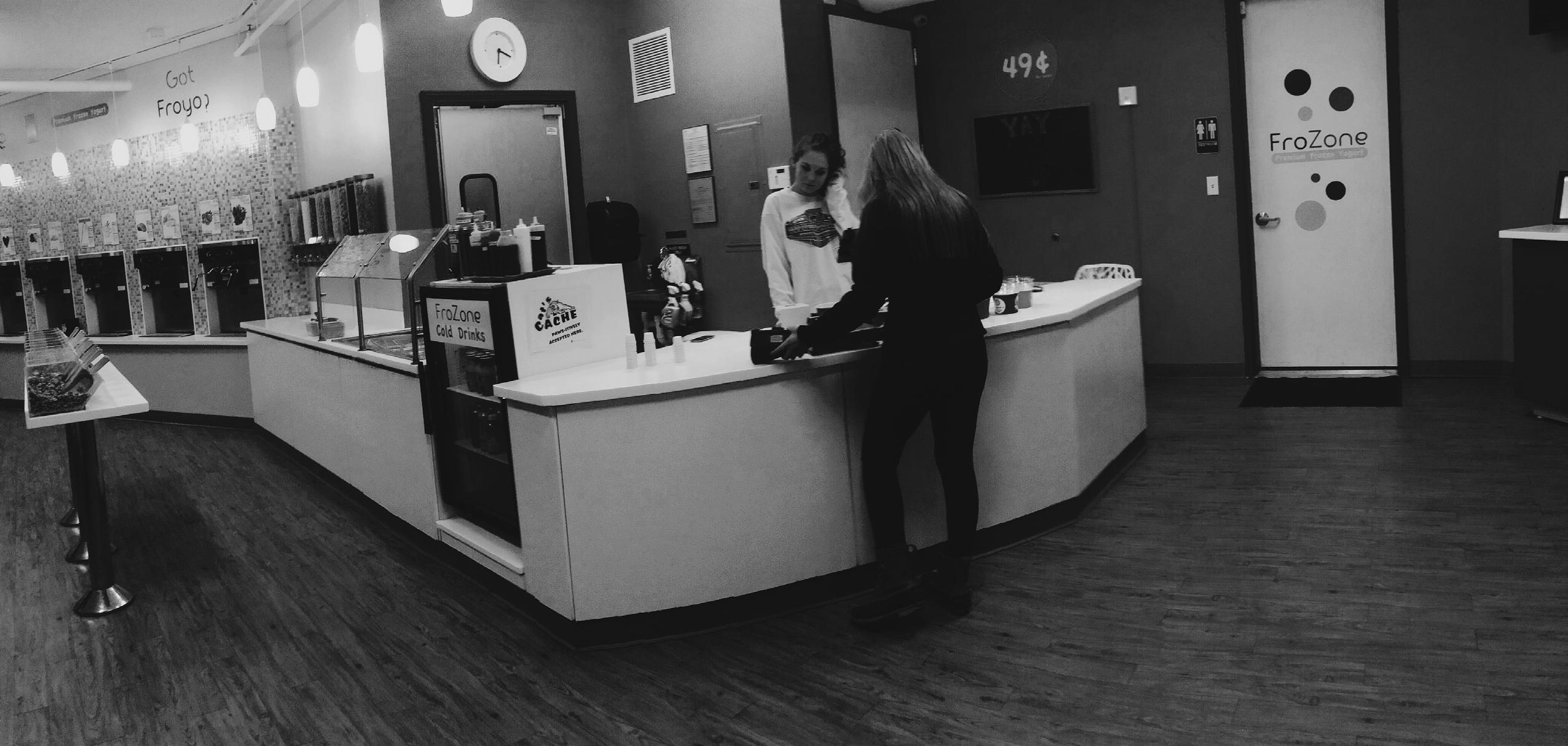


Customers that loved FroyoWorld can still indulge in their favorite ice cream alternative. “The goal is to provide the same great service, same great flavors and products, but will hopefully be able to add some better rewards [for our customers]. There will be different types of events for fundraising
that will be fun and hopefully get a lot of the community involved. I really want to create a community around the business, not just have people come get yogurt and leave,” said Alex Kopplekam, owner of FroZone.
Young entrepreneur Alex Koppelkam is excited to get his foot into the frozen yogurt business. Koppelkam is the owner of a paintball park in Weare, NH, and can’t wait to start a new business in a completely different market. “It’s an interesting market. I love buisness, and I love the location, the town, and all the college kids,” said Kopplekam. “Frozen yogurt has a special atmosphere that I think will be great to explore and make better,” he continued. FroZone is looking to bring a fresh new face to the frozen yogurt scene. With rebranding and recoloring, Koppelkam hopes to target more men and get a mixed gender into this primarily female oriented market. Koppelkam’s main focus for ensuring FroZone’s success is “manning up” the business, and lots of marketing to make sure people know that he’s new in town. “We are in a weird location, but a great location. I hope to do a significant amount of marketing to get the word out, and make sure people know what we’ve changed,” said Koppelkam.
Patrick McDonough, UNH student, was particularly upset about the clos ing. “I was pretty bummed. The cashiers would always say hello, and were very friendly. My favorite [topping] was the little strawberry poppers, I will miss those,” said McDonough. He is unsure how to feel about the new froyo place coming in. After checking the new place out McDonough said, “it wasn’t missing anything that froyoworld had, plus I felt better going in now that everything wasn’t pink.”
“I recently relocated to Maine, and therefore can not continue manag ing FroyoWorld,” said Ceasar. He also owns a store in Salem, NH which he plans to continue running.
“Rent in Durham is especially high, and I suspect that [Richard’s] pri ority was at his location in Salem,” said Todd Ziemek, a former employee. “I give him a lot of credit though. He wanted to start a business that would give people a healthy alternative to ice cream,” continued Ziemek. With so many choices in downtown Durham, it will definitely remain a competitive business. Interest in frozen yogurt is still at an all time high, and probably won’t be changing anytime soon.
The yogurt shop will have the same great fla vors as well as new flavors that have been spe cially created for the new store. FroZone is not a chain. Only having one location will supposedly enhance the quality of service and, of course, the yogurt itself. Be sure to check out FroZone today!
Haley Parry Buisness Manager
05 NEWS
e all remember our first iPod Touches from middle school with their black screens and rounded silver backs. It seemed like every fifth or sixth grader was walking around with their faces and thumbs glued to the tiny devices, using the Textfree app, and playing various games. There was Doodle Jump, Angry Birds, Temple Run, Words with Friends, Pocket God, and an array of others which could be downloaded to your iPod for free or .99 cents.

But today, students don’t seem to be as tuned into playing games on their phones. The app badges on your home screen depicting little red birds and pygmies have been replaced by the familiar blue from the Facebook and Twitter apps, and your lock screen lights up with snapchat notifications instead of telling you that the apart ments from your Tiny Tower game have finished being built.
Alex Cavallaro, ORHS class of 2015, remembers middle school when everyone was playing games, but when he turned 16, he said he stopped using apps and checked social media a lot more. “I think [apps] are the same thing over and over again. With social media, it’s different and changes every time you go on it,” explained Caval laro. He enjoys using Facebook, Twitter, and Instagram. According to Courtney Elmslie, a junior, social media is a lot more relatable for teens. “There’s only so much of a game that you need or want to play,” said Elmslie. “With social media, it’s all current updates, and every thing’s relatable because it’s people that you know [who] are either tweeting or talking about certain things. After a while, I feel like games just have a limit.”
And it’s true games do have their limits. Last year, the game Flappy Bird was introduced to the app store and became an instant success, but many soon lost interest. The game consisted of moving a little bird between ob stacles on the screen, and as the player got further into the game, the bird flew increasingly faster. Games like Tiny Wings and Angry Birds have had their fifteen minutes of fame, but soon get deleted due to lack of interest. “I think most of those games don’t really have enough replayability,” ex plained Liam Conrad, a junior.
But what qualities must an app have that give it this replayability? For a while, Conrad and a number of other Oyster River students all played Clash of Clans together. The point of the game is to establish and build your own fortress and army with friends, and fight other clans. Oyster River students joined the same clans, and fought other clans of fellow classmates. “It’s got a really addicting progression system that keeps you wanting to get better,” explained Conrad.
Kevin Kerrigan, a junior and fellow Clan member of Conrad, found that the game was so great because it allowed you to socialize with friends on your phone. “I think that [socializing] adds a different aspect of [games]
The Secret Behind A Good App What Makes Them So Addicting?

that might be more attractive,” explained Kerrigan. Kerrigan and his friend Colin Runk, another ORHS student, would spend hours sitting around playing Clash of Clans together, but eventually the two got bored and de leted the game. “Sometimes games just get old and people lose interest in them,” said Kerrigan. Kerrigan believes that the most popular of games are those which do have a social aspect to them.
Words with Friends recently gained popularity again in November, al lowing students to play a Scrabble-like game with each other over the inter net. “I really like the game, and playing with my friends is more convenient and entertaining than playing random people online,” explained Words with Friends guru, Nick Bergeron. “By playing acquaintances, I can harass them if they aren’t playing, and taunt them to some degree.”
This seems to be the case with most apps, no matter how social you can be through them. There’s a reason those games from middle school have been deleted and never heard from again: everyone just got sick of them. “I think that app companies always try to come up with new games that are directed to young people, so as soon as a new one comes out, people may go back to playing apps more, but as of now there’s not a big app that’s taking over,” explained Kerrigan. A new game is bound to come up soon. There’s al ways one that seems to grow in popularity for a couple months, and then drops off the face of the earth.
Clash of Clans, Words with Friends, Twit ter, or Facebook, the most popular apps to use, seem to be the ones that involve some sort of digital social interaction. Perhaps we’re all just craving social interactions through the very devices that we are be coming antisocial through.
 Abigail Colby Features Editor
Abigail Colby Features Editor
W
Students playing Words with Friends in the Core
06 NEWS
“I think [apps] are the same thing over and over again. With social media, it’s different and changes every time you go on it.” -Alex Cavallaro
Name that Cat


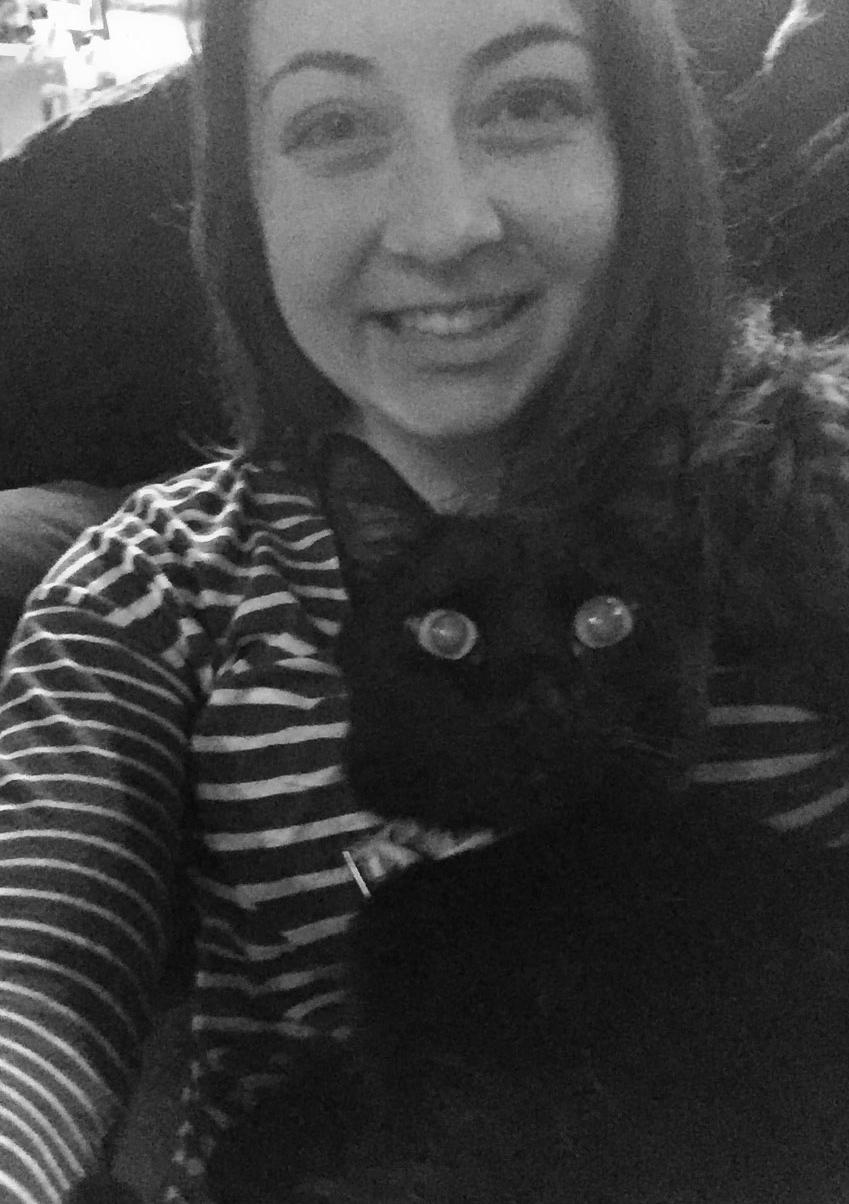
30.4% of household in the US own a pet cat according to the American Veterinary Medical Asso ciation. A few of the top ten reasons PetMd says you should adopt a cat are: they’re independant, cuddly, entertaining, and awesome. “Cats are friendly, brighten your mood, and keep you company,” says proud cat owner Madeline Young. All cats are different and many would say that cats resemble their owners. Each ORHS student’s cat has a unique personality -- here are some interesting ones!
 Sadie Moore Co-Editor In Chief
Sadie Moore Co-Editor In Chief
Name: Oscar
Age: 6 Sex: Male
What they would be like as a person: A child who eats and sleeps a lot.
Interesting facts: He was shaved because he got a lot of knots in his fur from running through thorn bushes and is described as crazy.
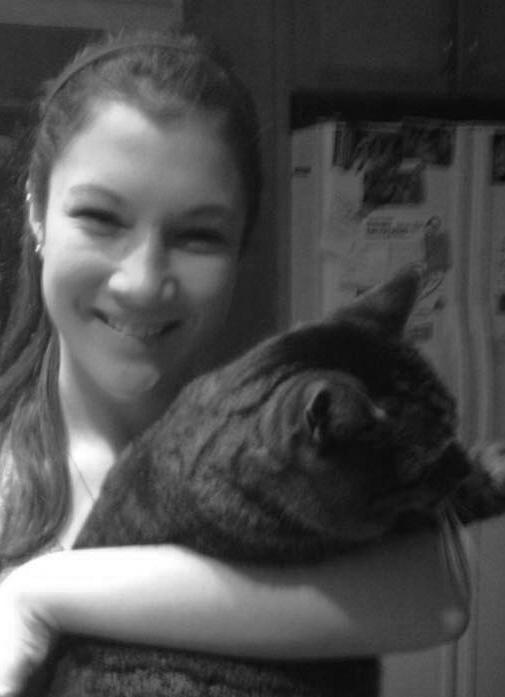
Try and guess which cat goes with which description!
Name: Tipo (Teeps for short)
Age: 4 Sex: Male
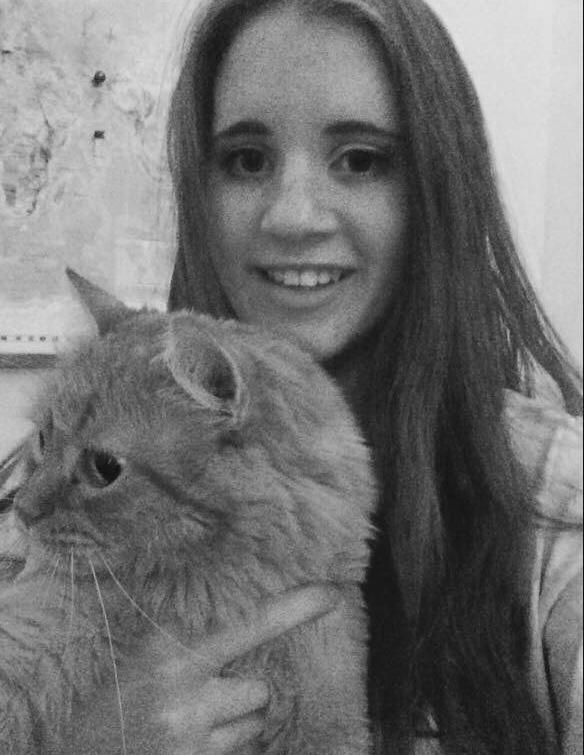
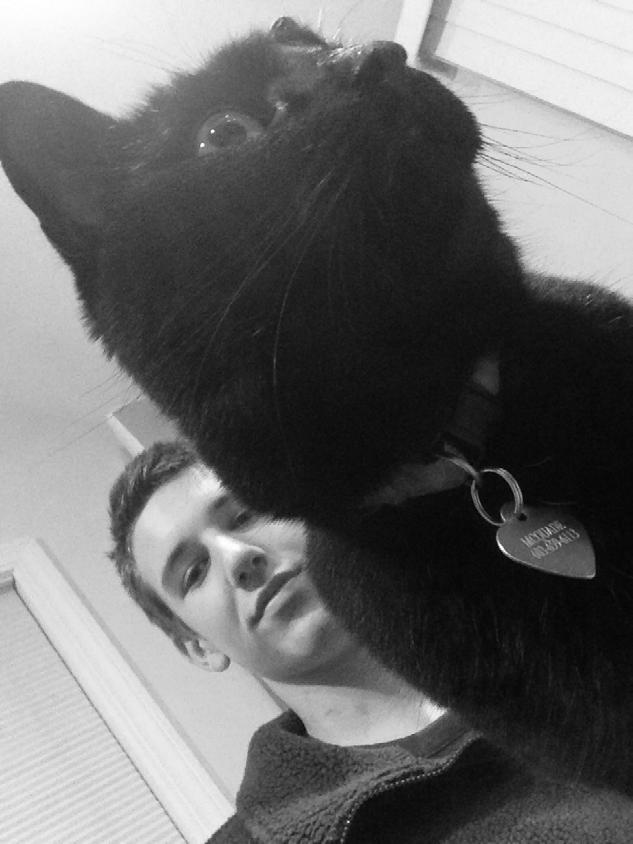
What they would be like as a person: He would be pretty laid back and be really good at bowling.
Interesting facts: He’s a vegetarian and that’s pretty unusual for cats. And he likes Parmesan cheese.
Name: Hazi Age: 5 Sex: Male
What they would be like as a person: Fat, unemployed, 50 year old British man.
Interesting facts: He loves to snuggle... he’s a snuggler.
Name: Nestle Age: 3 Sex: Female
What they would be like as a person: She would resemble Sam Colby because she is weird, impulsive, easily distracted, and very skittish.
Interesting facts: She spends most of her time in Tula’s yard rolling in his catnip.
Name: Valentino Age: 2 Sex: Male
What they would be like as a person: Really annoying and whiny and probably not have a lot of friends.
Interesting facts: Valentino has a Russian mother and enjoys honey nut cheerios.
07 FEATURES
Living with Crohn’s Disease Frankie Ritter’s fight with her sickness
Frankie Ritter, like most eighteen year olds, enjoys hanging out with her friends, going to parties, and frequenting her school’s soccer games. If she could, she’d probably be going out for pizza on a Friday night, or hitting the gym after she got home from school - just like anyone else her age. But over the past four years, Ritter hasn’t been able to participate in the activities most high schoolers take for granted, due to her diagnosis of Crohn’s Disease when she was in the eighth grade.
“I remember [the doctor] saying, ‘there’s no cure.’ And I sat there - I didn’t cry, I just sat there in shock,” said Ritter, who was diagnosed in November of 2010. Crohn’s is an autoimmune disease which causes chronic inflammation throughout the Gastrointestinal Tract (GT). For Ritter, it af fects her in her colon. With Crohn’s, the body’s immune system mistakes good bacterias in the GT for harmful bacteria, so it starts attacking itself, which leads to inflammation. The symptoms for Crohn’s vary depending on the individual, and for Ritter it causes severe cramps, digestive prob lems, bleeding, and extreme weight loss.
“The first or second hospitalization I was eighty one pounds. My mom said it looked like I had come out of a concentration camp,” described Ritter. Her disease has also led to an array of other symptoms, including nausea, vomiting, joint pain, and a loss of muscle mass.
Ritter’s symptoms come in flares, meaning she could be feeling fine one day, and then have symptoms the next. At the beginning of her diagnosis, Ritter’s doctors were experimenting as to which drugs would be the most effective for keeping these flares down. They tried Remicade and Prednisone, but she would still flare every couple of months. From Prednisone, Ritter has developed swelling in the face, a term called “facial mooning.” It also causes the redistribution of fat cells around the face and abdomen.
Because of the continuous flaring even when on current medica tions, Ritter and her mother Joanne Crudele have explored a variety of al ternate, more natural medications for her disease. Ritter’s medications are systemic immune suppressors, which have a lot of long term side effects, meaning she can get very sick very fast. Ritter and her mother experiment ed with a changing of diet, starting with eliminating grains, gluten, lactose, and sugar. Now, they just try to eat a very little amount of sugar, and eat as healthy as possible.
“I’m letting Frankie decide how much gluten she wants to digest; it’s up to her. She [has to] figure it out, and in the long run it’s her disease to manage,” said Crudele. Ritter’s whole family moved over to her new diet with her.
“We did it to support her emotionally, and to improve our own health and show her ‘hey you know what, you’re not alone.’ I think it’s hard when you’re in high school and you [and your friends] want to go out for pizza and you’re sitting there like ‘I can’t have that,” explained Crudele. When Ritter first moved to her new diet where she eliminated grains, gluten, lactose, and sugar, she dropped down to eighty one pounds, and couldn’t continue playing the sports that she did. Before her disease, Ritter was an avid soccer and basketball player, but due to her poor health and loss of muscle mass, she hasn’t been able to play for four years. Sara Messler, a junior, played with Ritter up until the eighth grade, when Ritter had to stop playing sports. “She was a great athlete,” said Messler. “I loved playing against her; she was always good competition for me and I loved watching her play, she was fast and athletic in all of her sports.” Even today she has to limit the amount of physical exercise, and doesn’t have the ener gy to go to school for a full day, or go out with her friends too late at night. Ritter admits it was hard at first to figure out what was too much, in terms of activities, and it was hard for her friends to realize as well. “All my friends, now they understand if I’m tired - they don’t pressure me into going places. And they ask me ‘are you too tired to do this’ or ‘are you comfortable to do this’ and it’s just really nice to know that they understand.”
Grace Tauriello, a good friend of Ritter’s, has been supporting her throughout her whole diagnosis. Tauriello admits it was hard at first to become adjusted to what Ritter could, or couldn’t do. “She was good about telling me when she reached her limit, but it was definitely something to get used to,” explained Tauriello. Deanna Drusket, another close friend of Ritter’s agrees with Tauriello. “Frankie makes it really easy. When you’re around her you don’t even know that she has a disease. When she gets sick it is difficult, [but] Frankie is such a good person, it’s not really hard to be supportive. When she can’t go out - I don’t mind staying in with her.

We
08 FEATURES
“I remember [the doctor] saying ‘there’s no cure.’ And I sat there- I didn’t cry. I just sat there in shock.” - Frankie Ritter
have a fun time no matter what.” Tauriello said it was, and still is, extremely difficult to see Ritter go through her sickness. “Sometimes I had to balance my emotional stability with her emotional stability and I needed to be there for her so I needed to push that aside,” she said. Tauriello explained that it was also difficult for Ritter to miss out on so much with her friends. “[She doesn’t] have the same social atmosphere that all of us have. She missed out on some of the big social things that happen during high school.”
Not only did she miss the social aspects of high school, Ritter has also had to miss quite a bit of her academics as well. She usually can only spend about half of her day at school, due to being too exhausted. Her freshman year she missed the entire year, but came in part time for second semester of her sophomore year. “Junior year was one of the better years,” explained Rit ter. “In the beginning of the year I started out with a bigger course load and then I flared, so we had to reduce it for the second half.” Since her freshman year, she’s had to constantly coor dinate with her counselor, Kim Sekera, to make sure she’s completing all her school work. “It’s always been sort of touch and go if you will because it changes so much,” explained Se kera. “[We’re] always trying to have her come to school as much as possible [has] always been Frankie’s goal.”

Due to the amount of school Ritter has had to miss, she takes classes through the Virtual Learning Academy (VLACS) to keep up with the classes she’s missing. “It’s definitely trying to be creative and flexible because we never know when Frankie’s feeling healthy or not so healthy,” said Sekera. Because of Ritter’s unpre dictable flares, in the past when she was feeling healthy she’d try to take on a course load that she just couldn’t manage, and would result in her flaring up again - but Ritter hasn’t let this stop her from challenging herself academically. “I’ve always been in complete awe of Frankie’s ability to stick with it and stay motivated throughout this,” said Sekera. “I have to think of school dif ferently than other people. I can’t take it so hard on myself if I miss a couple of days,” explained
Ritter.
Ritter started eighth grade on the advanced track, but hasn’t been able to take all the ad vanced classes because she doesn’t have the en ergy to keep up with their fast pace. This year, Ritter found out that if she wanted to graduate with her class, she’d have to take an additional four classes online, but was unable to, due to fa tigue, so she’ll have to make up for the credits she’s missed next year. However, Ritter will be be able to walk with her class at graduation.
Ritter recounted her reaction when Counsel ing and administration told her she’d have to stay back a year: “In one of the meetings this year they put out the idea that maybe I come an extra year, because that year I can take some of the harder courses I’ve wanted to take,” she ex plained. “I sat there and I had to bite my lip so
juniors who she’ll be able to hang out with next year. “I think that Frankie has mixed feelings about being in high school for another year be cause like most she is ready to be moving on. Frankie is handling everything with a really positive attitude and her maturity stretches be yond any other high school student I know,” ex plained her good friend, Natalie Davis. Sports or no sports, Ritter is optimistic for the future. She hasn’t flared in a couple of months, and is currently on track to do everything she’s planned to do in high school. Next year, she hopes to spend half her time at Oyster River, and also take advantage of the Cats Program, and take a few classes at UNH as well. She’s also entertaining the idea of going to UNH full time in a couple of years. And although college can be difficult with a disease like Crohn’s, if Ritter’s high school career proves anything, it’s that she’ll be able to do it. “Frankie’s got a lot of determination,” said Crudele. “Even going to prom last year she said ‘I don’t care, I’m going,’ and she went.”
that I didn’t cry because I was just thinking I’m going to come to school and everyone’s going to look at me like ‘what are you doing here, are you just stupid?’ I’m afraid that I’ll be isolated or something.”
Although she is disappointed she won’t be grad uating this year, Ritter does hope she’ll be able to play soccer and basketball competitively next year - something she’s been waiting to do since her freshman year. “I would love to play [with her],” said Messler. “I know she’s been trying, I’d love to see her be able [to] fill the lost time and enjoy something she loves so much. Playing by her side would be an honor, I can’t wait if she does.”
Ritter also has many friends who are currently
 Abigail Colby Features Editor
Abigail Colby Features Editor
“I have to think of school differently than other people. I can’t take it so hard on myself if I miss a couple of days.”
- Frankie Ritter
Ritter and Tauriello in the Senior Core
09 FEATURES
The Coffee Hype

A Guide to Durham’s Coffee Shops


It’s a crowded afternoon at Breaking New Grounds, and the line is stretching almost out of the door which is great for you because you have absolutely no idea what you want to order. You stare up at the boards of options: lattes, espresso, tea, mochas, coffee. Your eyes glaze over and the words hazelnut and hot chocolate all seem to blend together, and then before you know it you’re next in line. The barista stares at you, waiting for a response and you just look back at them with complete embarrass ment because you have absolutely no idea what you would like to order. You’re not about to ask twenty questions clarifying what the difference is between a cappuccino and an espresso, so you probably just blurt out the easiest thing to say on the menu.
enough.
The primary coffee shops in Durham are Breaking New Grounds, Dunkin Donuts and Aroma Joe’s. All three of these coffee shops have their own ambiance and each offer a variety of foods and drinks.
Aroma Joe’s is located on Main Street in Durham, right between Subway and People’s Bank. There is plenty of parking for Aroma Joes, which is al ways good for people who are in a hurry. Aroma Joe’s menu consists of many coffee and energy drinks, also teas and smoothies. They have many pastries like muffins and donuts and after five PM their pastries go for 50 cents, which is definitely affordable for high school students. Aroma Joe’s offers a bit of seating indoors, and once the snow melts they offer seating outside. If you are environmentally consience be sure to bring your own mug though, because unfortunately Aroma Joe’s uses styrofoam cups. One more drawback would be that they use syrups for flavoring their coffees and don’t actually brew it into the beans, but then again that’s probably why a lot of high school students go there for their “coffee,” that actually tastes like a candy bar. A lot of high school students drink Rushes from AJ’s. Rush is an energy drink mixed with your choice of flavoring like raspberry, watermelon, etc. Frequent AJ’s customer, Kelsie Poplawski says “I go to Aroma Joe’s because it’s on my way to school every morning and their cof fee and drinks are better than places like Dunkins. I think it’s better than other coffee places because they have good coffee and a lot to offer for other
“I have been in a coffee shop maybe four times. I feel nervous and out of place whenever I get near one,” says junior Kobi Hackenburg. If you fit this description, then this is the article for you: a how-to guide on what coffee shop in Durham is the best fit for you and how to avoid ordering some thing that is either too strong for your taste, full of too much caffeine, or not
drinks like Rush.” If you’re craving something sweet: Aroma Joe’s is the perfect place to grab either a fun flavored coffee drink or baked good. Breaking New Grounds (BNG) is also located on Main Street. Ali Clark, an employee at BNG and says “there are two types of customers that come to BNG: either you get the townspeople, or the students who range from high school to college, and this varies throughout the year. It can be a place where students and professors resort to for studious purposes while hav ing a cup of coffee.” BNG has a good amount of seating with enough pri vacy that makes it a popular place for homework, meeting’s and meeting friends or family. The soft lighting and mellow music make it a perfect place to have a quiet conversation or to zone out in your work. Junior Mae gan Doody, a frequent BNG goer, says “BNG is my favorite coffee shop in Durham because of its comfortable and laid back atmosphere. It is very welcoming and its baristas are upbeat and friendly.” BNG does roast its own coffee, and offers a variety of teas, coffee flavors, seasonal lattes, and mochas, etc. Clark suggests that new customers should order a specialty latte or mocha, “That way they are still getting the caffeine they want but it
10 FEATURESDepartment
“I have been in a coffee shop maybe four times. I feel nervous and out of place whenever I get near one.” - Kobi Hackenburg
is personalized with the flavors they choose and the fun names listed with them.”
Last but not least is Dunkin Donuts. Dunkin Donuts is located at the Irving gas station in Durham. I’m sure most of us have been to Dunkin Donuts at some point in our life… It’s a great place to grab some coffee if you’re in a hur ry, but don’t get too excited; the one in Durham doesn’t have a drive through. They have good prices, plenty of options, and many high school employees so it’s always nice to see familiar fac es. Although it lacks the mood of the other two coffee shops, it’s convenient for people en route, due to its location (right by all the gas stations). All three coffee shops supply about the same drinks or at least a variation of a spe cific drink. It’s much more about whether you’re looking for something aesthetically pleasing to the eye to do your homework in, or have a con versation with someone over some hot choc olate, or if you’re just looking for a quick, easy
great place to meet friends or get work done, and are a place where you can enjoy a variety of flavors and options. Though it can be easy to get scared off when the the person in front of you in line asks for some concoction of a drink, just remember to start off with something basic and that you know you enjoy. Soon enough you could end up like senior Grace Tauriello who says “coffee feeds my soul.”
Don’t be self conscious about your coffee brew or choice of drink; not all of us have taste buds that are capable of drinking straight espresso. Be proud like junior Kevin Kerrigan: “to be honest I really like the ‘girly’ sugary ones. For example I like a chocolate mint coffee from Aroma Joe’s. Sometimes I just get coffee to taste good and oth er times I need a little energy.”
There’s nothing quite as nice as sitting back in a chair and enjoying a nice warm cup of anything during these cold winters months.
While a lot of people rely on coffee strictly for the caffeine component, I encourage you to try something new. Maybe a type of tea or a differ ent flavoring. Coffee is a great thing because you can customize the way you want it, chose the fla voring you want. How much cream and or sugar to add, if any.
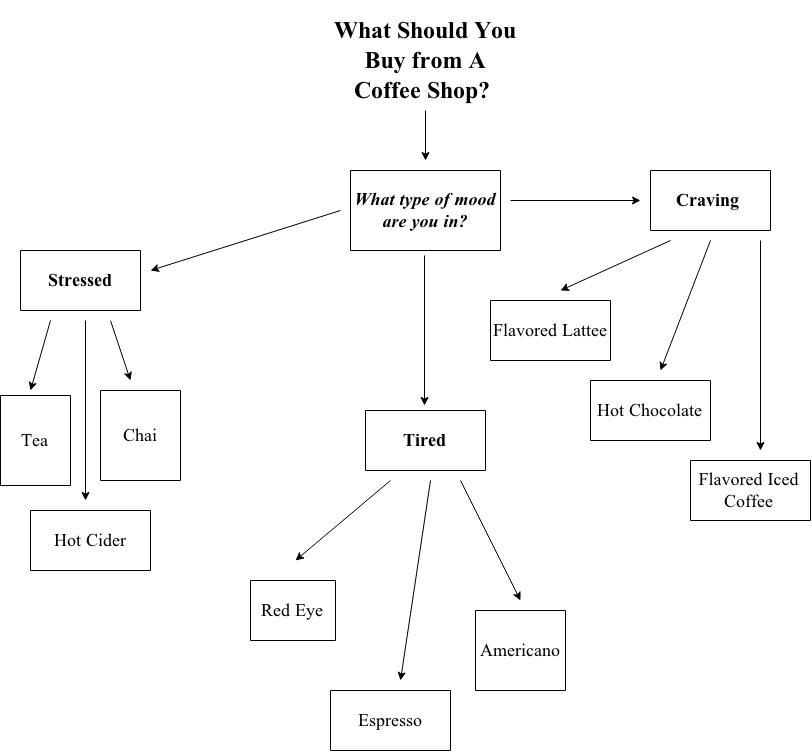
Coffee, tea or whatever you order can be a nice way to get war,, cool down, or maybe sweeten your mood up. According to the Harvard School of Public Health 54% of Americans over the age of 18 drink coffee, so you might as well jump on the bandwagon.

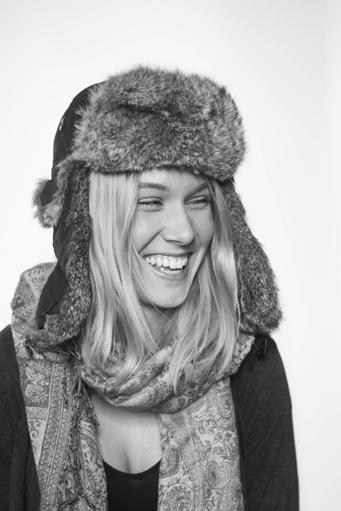
stop. As for what you order, junior Evan Gordon puts it perfectly: “what I order typically depends on my current mood and the weather.”
Coffee shops for new customers may seem quite overwhelming at first, but are actually a
Isabelle Todd Co-Media Manager
“What I order typically depends on my current mood and the weather.”
11 FEATURES
- Evan Gordan
Aprés Oyster River
What Are Our Alumni Up To?

Imagine helping a dying woman drink her last sips of water, winning $2,500 from a large TV corporation, or crossing into an unknown country with no sure way of returning. Each year seniors graduate, and the people we once shared a school with move on. Unfortunately, we know very little about the amazing achievements and adventures that our Oyster River alumni have ex perienced in their lives after high school. Although many of our alumni are accomplishing fascinating things, these are three graduated students who have had phenomenal experiences to highlight in this article.
Cam Messer
About Cam Messer went to Ghana to vol unteer, but that was not he ended up doing. After a series of complicated and intense encounters in Africa, Mess er spent three months with a local family in Ghana. He be came a part of the communi ty. After returning to America he “wandered throughout the United States.” Skiing and rock climbing in Colorado was his focus. During this time, Mess er only had $20 dollars to his name. He scavenged for food in dumpsters, and slept on the couches of strangers. “I had a much larger understanding of wealth; it was a humbling time of my life,” said Messer. Now Messer is training to hike the Appalachian Trail, from Georgia to Maine. He leaves next March to hike the trail with good friend who is also an Oyster River alumni, Ian Elmslie. The trail is 2,176 miles long and a mental and physical feat. Messer is also planning to apply to schools for the fall se mester of 2015.
The Scene
John Parsons, valedictorian of Oyster River class of 2013, walked up the stairs looking out on the Boston Harbor. The doors of the Institute of Contemporary Art opened and in walked Parsons with the four other teams of finalists. “My teammates didn’t make it, so I had to carry the torch myself,” said Parsons, seated in the audience while the speak er introduced the first competitor. They called John’s name. Frightened but ex cited, he climbed the stairs to the stage. Lights blinded him while he began to give his presentation. Judges from the huge entertainment sites threw softball questions at him, which he answered with ease. By the time the last competi tor spoke it was clear Parsons was run ning away with the vote. He climbed up to the once intimidating stairs; now they welcomed him with camera flash es. They held out the $2,500 check he had won. “I finally felt that I deserved to be at MIT,” said Parsons.
The Scene
“I only had a single entry visa, I left fully aware of this complica tion. Once I crossed the border to Togo, Africa, it would be very hard to get back,” said Messer. Af ter leaving Ghana, and the safety of his gap year program “due to a conflict of interest,” Messer knew that he made the right decision. Curiosity led Messer to the larg est voodoo market in the world. He was surrounded by unidenti fiable skulls, possibly monkeys. Small dolls and masks carved from wood were in stands throughout the next row. “This was one of the most intense moments of my life,” said Messer. The country was not the safest to be in on your own in, and knowing little of the country’s languages made things immensely difficult. After seeing the market Messer was ready to leave. After spending an hour being interro gated in a small office with an im migration officer grilling him, he entered back into Ghana where he started. Then, after bribing anoth er immigration, officer he finally was on a flight back home.
John Parsons
About John Parson Parsons is a sophomore at MIT, and he is major ing in computer science and engineering. Parsons is thriving and already has multiple businesses that have been very successful, one of them be ing EditRevise, a software mainly targeted to help students work on their college admissions essays. Parsons also won a very competitive con test, where he and his friends created a system to show people and their competitor’s fantasy football team’s stats and other critical informa tion on their TV screen. He came in 1st place in the entertainment category, and received $2,500. “The caliber of success he has had so far has re ally surprised me, even at MIT he is ahead of most of his peers,” said Emily Halstead, a senior at Oyster River and has been dating Parsons for three years. If any of you know Parsons you’ll be pleasantly surprised that he has joined a frater nity, and loves it. “It turned out to be one of the best decisions I have ever made. I’ve made tons of lifelong friends, and got into EditRevise with the help of my fraternity brothers, and it is a joy to be able to go home to it every night,” said Parsons.

12 FEATURES
Frederik Svanholm
The Scene
Frederick Svanholm, class of 2013, walked into the small one room house. The ceiling was made of grass and was falling apart. There was a sick woman laying in the corner, totally starved, cheeks sunken, and her hair had al most all fallen out. When Svanholm got closer towards the woman the un pleasant scent of urine filled his nose. She couldn’t even stand, nevermind go to the bathroom. There was fear in her eyes, and she knew she would die. A fungus spread to her brain, that had caused paralysis due to HIV. Frederick propped her up, and put a cup of wa ter to her frail lips. He knew that was all that could be done for this woman. She didn’t want to leave the house she lived in her whole life. She would die once the rain season came and broke through the roof. He took care of the women while they talked about what was going to be done with her 8 year old son.


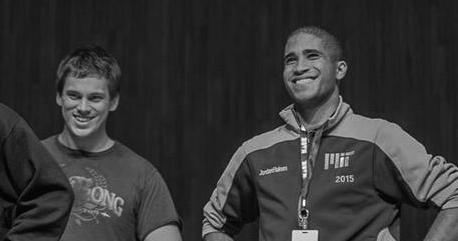
About Frederick Svanholm Svanholm took a gap year, and traveled through Uganda, Rwanda, and Tanzania. He worked with with a variety of nonprofit orga nizations. He followed a social worker for a pe riod of time as described above. He also helped to renovate a school, worked at a nature reserve that kept endangered rhinos, taught English to African students, worked with kids with all kinds of disabilities, and volunteered at AIDS clinics. “My gap year completely changed my life, and is what influenced me into deciding my major, I would suggest a gap year to every one looking to expand their horizons,” said Svanholm. After returning from Africa he got a job at a publishing company as an editorial assistant. “It took up a lot of time, but i learned a lot about what having a real job is like,” said Svanholm. Now he is getting his bachelor’s degree at Roskilde University in Copenhagen, Denmark, in international humanities. His knowledge in English, Danish and Swahili will be helpful for his career. He plans to continue his education at another international school, possibly in London.
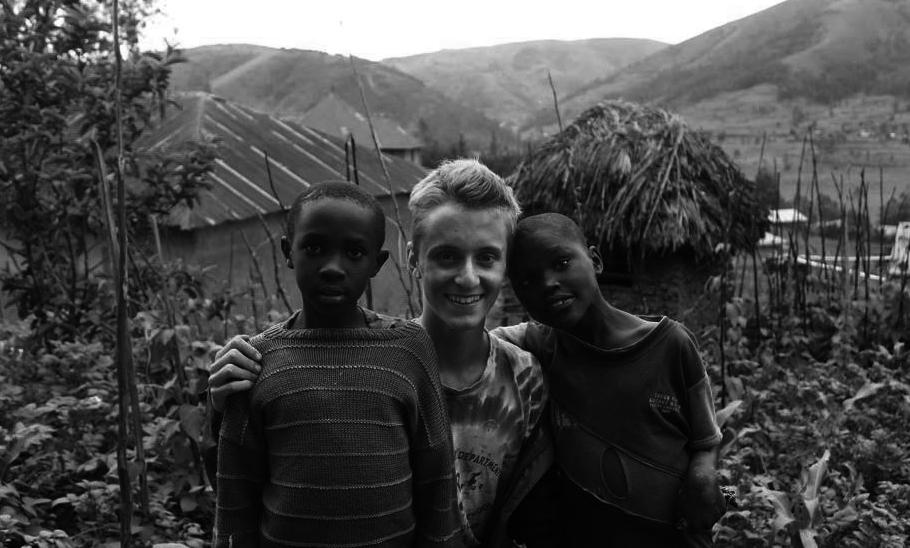 Haley Parry
Business Manager
Haley Parry
Business Manager
13 FEATURES
As the foliage falls to the ground and the air becomes increasingly frigid, us New Englanders know what is coming: the cold, harsh, long, painful winter. In general, winter seems to be everyone’s least favorite season; I know it’s mine. But the beginning of winter can sometimes bring with it [the beginning of] a [sort of] depression known as Seasonal Affective Disorder, ironically abbreviated as SAD. There are varying levels of SAD that range between a general feeling of gloom to serious depression, and while the disorder most commonly occurs for individuals in the winter time, it can also happen in the summer. It all depends on the person, where they’re from, what they like to do, and how much of an effect the changing weather has on them.
A Medical Disorder General Gloom
Maria Rosi, an art teacher at Oyster River High School, has noticed that SAD affects her husband every year around the same time in December. “It took me about three years with him to realize it was happening, but once I noticed it was so obvious. We went and saw the doctor and it turned out he was majorly deficient in Vitamin D. Now he takes a supplement every day and the symptoms are gone,” she said. While the case of Rosi’s husband concerns an adult, the disorder can be majorly detrimental to adolescents.
For some people, it’s not just that it’s snowy or cold but that once the initial snow storm passes, New England looks absolutely gross. “When I lived in Colorado, the snow would stay white and pretty all winter long but here it all turns gray and dirty and everything outside just looks gloomy and depressing… I can see how this would depress people be cause it’s definitely got me down sometimes,” said Westley Landry-Mur phy, and ORHS sophomore who moved to Durham from Colorado two years ago.
For high school students living in areas of the country where the climate change from season to season is drastic, SAD is quite common. “I’m defi nitely more tired during the day because it’s dark when I get up, it kind of looks gloomy outside, and then only about two hours after I get home it’s dark out again, so I basically think it’s time for bed and I don’t get my work done. It’s a weird season,” said Fran Jeffrey, who has lived in New England her entire life and can recognize the symptoms of SAD.
What Can You Do?
When the effects of SAD become obvious to individuals, mild or severe, it is important to do something about it. Claire Genes, a sophomore, has figured out how to enjoy the winter and not get too bogged down. “I love Christmas lights and setting them up at my house and the Christmas tree always makes me happy. I always hangout with people and go skiing or ice skating on the riv er. I love wearing winter clothes ten times more than [I like wearing] summer clothes. Also, I love getting and giving Christmas presents. I like the whole process of bundling up, going outside, freezing, and then going back inside and warming up by the fire and drinking hot chocolate. When the weather is gloomy doesn’t depress me it just means being able to not feel guilty for staying in side and not enjoying the snow. It means I can be warm and comfortable, but obviously when the weather is terrible for a while I’ll just get pissed off and get really tired of it and I think the best things to do is have something to look forward to something like planning a party or just having people over when it’s too gross to go anywhere,” said Genes.

Opposite from Rosi’s husband, senior at ORHS Patrick Mulhern goes through a mild version of SAD during the spring and summer months. Mulhern is an avid skier who spends every weekend up at his ski house in Bartlette, New Hampshire as soon as the snow begins to fall. “Skiing is everything I love. I look forward to it all of the time, every day, and when the season is over I just feel kind of useless. I wouldn’t say I get depressed, really, but now that you mention it I do recognize a change in my mood. In the summer I’m really just waiting for winter. I fill my time with other stuff in the mountains like hiking and summer camp, but ski season is like my home,” said Mulhern.
 Zephyr Jaeger News Editor
Zephyr Jaeger News Editor
What’s important to remember about Seasonal Affective Disorder is that the symptoms of it may not always be visible to the people around someone who is going through it. Generally, someone with the disorder will just be categorized as moody and depressing, and their friends or family won’t know that they actually need some help. If doing fun and easy winter activities doesn’t pull people out of it, there are more extreme measures that can be taken. Light therapy and medication are becoming increasingly helpful for people who are going through Seasonal Affective Disorder. “Now that my husband has been taking the Vitamin D pills he is so much better off. It was such a good choice to go to the doctor and figure out what was wrong because I could not go through another winter of him being constantly down and depressed,” said Rosie. If you notice yourself or someone around you dealing with a little bit of SAD, try some of Claire’s helpful tips on how to enjoy the snowy months or take extra steps like seeing a doctor.
An Unusual Case What’s Really Affecting You?
14 FEATURES
Photo Credit: Neville Caulfeild
THREE OF 2014’S BEST ALBUMS
The Best Releases Spanning Multiple Genres
Flying Lotus You’re Dead 30 year old Steve Ellison has re leased four previous albums un der the name Flying Lotus, but his fifth and latest studio album You’re Dead, is without a doubt his greatest release yet. Since his debut in 2006, he has released numerous albums each exploring a different facet of his persona and creative mind. You’re Dead explores a con cept that many have pondered, but none have proved: death. “I want ed to make a record that started at the moment of death, the perceived idea of what death is,” states Elli son in an interview with NPR. “As soon as you hit the play button, it’s on, and then it’s the whole journey through the afterlife, through the Tibetan Book of the Dead kind of idea of what it means to die and to go into differ ent dimensions,” Ellison says.


Concepts aside, You’re Dead pushes the former norms of the hip hop genre, as notorious players in the L.A beat scene have done before him. You’re Dead will scare, shock, startle, and hypnotize you. The influences are apparent throughout the album, and perhaps not so coincidentally, seem to be from those who have died. Ellison’s late aunt and famous jazz pianist Alice Col trane is commonly cited as one of his largest influences, as well as the leg endary James Yancey Dewitt (J Dilla). The first three tracks on the album bounce seamlessly between spastic free jazz full of drum breaks, synths, chimes, and saxophones to rock and hip hop. Even while listening to the album as mp3’s, Ellison’s production has depth, and shows that he is able to shift from cluttered electronic layers to airy spacious jazz in just seconds, even within individual tracks. “Flying Lotus shows a mastery of his craft in his ability to manipulate genre boundaries in order to express his vision,” says Kris Roman, a freshman at Berklee School of Music and the bassist in Bay Faction (a trio out of Jamaica Plain, MA). With only 40 minutes in total length, Ellison’s ability to transcend genre, rules, and the boundaries of physical life itself is incredible. As if to top off his ambitious feat, Ellison throws in features from both Kend rick Lamar and Snoop Dogg. “Never Catch Me” features Kendrick spit ting a fast paced verse that exudes both finesse and lyrical talent. For some it will take a few full listens, but Ellison’s 40 minute masterpiece will please fans of free jazz, hip hop, instrumental tapes, and those who aren’t afraid to switch up how they define genre.

RATKING- So It Goes Take the commonly romanticized
view of New York City, put it in the hands of three rabble- rousing late teens, add a healthy dose of 808’s, raw grit, and aggression, and you’ve summed up So It Goes. Ratking enters the rap scene at a point where so many artists are attempting to reinvent the sound of New York. With New York 90’s revival in full fledge, Ratking seeks to separate themselves from the pack, offering something so youthfully aggressive and refreshing that So It Goes almost exists in a world of its own. Don’t let the hectic instru mentals blur the message; Ratking is a product of New York City, and So It Goes pays homage to the city in every way, using the five boroughs and vivacious street life as its muse. Sporting Life, their producer, commonly cites the ambient sounds of the city as his inspiration for how he layers his production, which is apparent as subway dings and other sounds of the city pop up around the album. Clever wordplay, double meanings, and manipulation of syllables lets Emcees Wiki and Hak portray their raw grit ty view of life in New York. “Make a thug uptown, come down/ to hustle on canal/ what’s the bustle all about?/ sweet kid with a free crib/ hustle on his couch,” shouts Wiki in “Canal”. Contrasting that, Hak’s flow has taken on a more subtle and methodical sound, or so his verse sounds in “Canal”: “So Lenox here I lay/ lay lay lay you’re my guest/ breathe out the stress let’s digress/ sweated seventeen summers so surely you’re my nest”.
It is apparent that there is some 90’s revival influence, but “Ratking’s flows are a lot different, not jumping on the MIGOS triplet flow like so many up and coming artists,” says Mattias Lambert, a student at Concord High School and fan of Ratking. “Tracks like “Canal” do a good job representing the pace of New York, which is incredibly fast,” Lambert says. Ratking is for the hip hop fan at heart, but their many influences and wide array of motifs could appeal to many. Their ability to encapsulate their abstract view of New York is reason enough for anyone to give a listen or two.
Real Estate - Atlas

Indie rock band Real Estate changed their sound drastically with the lat est release: Atlas. The group went from being a pool party soundtrack to singing about inner turmoil during pivotal moments in a young person’s life. “They definitely start ed out as more of a feel good, surf rock kind of band with their self ti tled and have developed a more day dreamy sound,” says Reilly Webb, a senior at ORHS and member of local band DAVE. Real Estate’s 2014 re lease Atlas, is their most mature and refined sounding album yet. Clean chords and clear lyrics dip and dive between one another throughout the album to create its melody, while the subject matter speaks to those longing for better times.“Atlas kind of has more of a beautiful melancholic feel, like comparing summer to winter,” says Webb. The entire album’s clean open chords and light hearted melo dies give off a hazy summertime vibe, but lead singer Martin Courtney’s lyrics speak of topics much deeper. “I cannot come back to this neighbor hood/ without feeling my own age/ I walk past these houses where we once stood/ I see past lives but somehow you’re still here,” sings Courtney on the track “Past Lives”. Former ORHS student D.J DePasquale has been a follower of Real Estate for quite some time. “I think its good to look at a band’s evolution by listening to their albums in sequential order. Atlas does a good job of showing where the band is at and even more importantly, shows where they are going,” explains DePasquale. Courtney substitutes his voice for his guitar in the almost interlude like track “April’s Song”. “I really like “April’s song” for the instrumentation. I think “Had to Hear” was a great song for the album opener as it shows a bit of everything in one song,” says DePasquale. Atlas is easily digestible even without diving into the deeper turmoil driv en lyrics, and might be ideally listened to while laying on the beach, on long drives, or with a great deal of sentiment. The melan cholic vibe is often rather calming, making Atlas a pleaser of predominantly indie rock fans, but worth a listen for all.
Sam Colby Co-Editor in Chief
15 FEATURES
Channel Your Inner Flannel
Winter is here, and the Oyster River flannel season is officially in full swing. I asked five high school students to share their prefer ences and opinions on flannel fashion, and their tips can help you buy the best flannel for your personality.
Eric Smath:
Where he buys his flannels: “...a combination of L.L. Bean and Sav ers.”


Prefered flannel color/s: “I have a flannel that’s red, white and blue.”
Smath also enjoys gray flannels
Favorite thing about flannels: “Wearing a flannel is like wearing a coat made of kittens.”
Where she says you shouldn’t buy them from: “Toys-R-Us” and “PetSmart”
His thoughts on poor flannel fash ion: “I have never personally seen it [flannels] worn badly but I believe that it is possible.”
What he draws the line: “Any flan nel that costs more than $30 is a crime.”
Advice to potential flannel buyers: “If you’re considering it I would highly recommend it.”
Kayla Bennet: Where she buys her flannels: Savers Prefered flannel color/s: Browns, reds, and a little green (not a fan of orange)
Favorite thing about flannels: “They’re warm and cozy and easy to throw on when I have three minutes to get ready in the morning.” She also says that “they’re cheap and afford able.”
When she wears them: Year-round and she says they can be good in the summer “on a cold night by the campfire.”
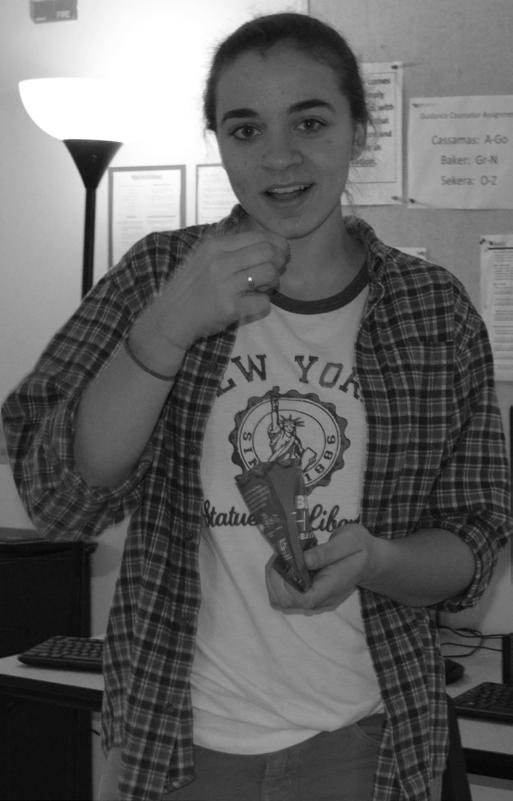
What she’s willing to do for a flannel: “I would spend $3.99 on the flannel of my dreams.”
Marissa Flynn: Where she buys her flannels: the “Savers men’s section.”
Prefered flannel color/s: Navy blue, dark brown, “nothing that’s bright or cheerful.”
When she first fell in love with flan nels: “I wore one once for team spirit and I haven’t stopped since.”
Where she says you shouldn’t buy them from: “Anywhere first hand.”
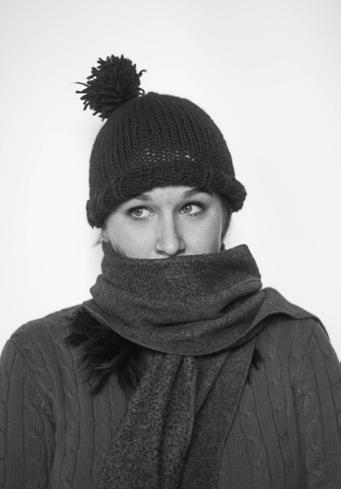
When she wears them: “Mostly cold er seasons.” but also at night in the summer
Deanna Druskat:
Where she buys her flannels: Urban Outfitters, thrift stores, and “a cou ple from my brother.”
Prefered flannel color/s: Reds, blues, and “normal prints”
Favorite thing about flannels: “They keep me warm. I feel like I’m not wearing anything.”
Where she says you shouldn’t buy them from: Forever21, Walmart, and other stores that treat their employ ees poorly
What she’s willing to do for a flannel: “I’d travel the world...but I wouldn’t fight anyone for a flannel.”
Advice to potential flannel buyers: “Wear them; they are very comfort able.”
As is clear through these student’s personalities and preferences, it is essential to develope your own sense of style and taste for flannel fashion. When out shopping on your own, with friends, or with your mom, be sure to make good fashion decisions that will reflect positively on you as an individual. Have fun, be safe, and remember that choos ing the right size, colors, and style for your personality will make your flannel experience the best it can be.
What she’s willing to do for a flannel: She says she’d drive “three minutes” for a flannel

How not to wear them: “Don’t button it all the way up to the top.”
Madi Pelletier-Murrill Op-Ed Editor
16
FEATURES
One Giant Leap
Why Interstellar Could be the Future of Astronomy

Interstellar, recently named the second-highest grossing film of 2014, featured Matthew McCanaughy as a distressed father chosen to direct an intergalactic mission into deep space. Directed by Christopher Nolan, the film takes place in a near apocalyptic future in which the entirety of Earth has been transformed into a dry, sandy atmosphere that very closely resembled the 1930’s Dust Bowl.
The story focuses primarily on the search for a second Earth-like planet for humanity to inhabit. However it also incorporates a great deal of mod ern scientific theories, as well as a few of Nolan’s own interpretations of the universe. The astronauts in the film experience multiple dimensions, wormholes, and time relativity- which critics quickly accused of being sci entifically inaccurate, but may not be so unrealistic. The movie raises two major questions. How accurate is the science portrayed in the film? And how relevant is astronomy to contemporary society? The answer to both is: more than you’d think.
John Gianforte, an astronomy professor at UNH, believes in the (convinc ingly certain) existence of such phenomena. And while he likes to enter tain the possibility of technological advances similar to that of Interstellar, Gianforte also estimates a sizable time gap between the present and any sort of advanced space travel: “By the time you’re my age- maybe a good 30 years from now- anyone will be able to buy a vacation in sub-orbit. As for wormholes- yes, mathematically they’re possible, but as I tell my students, just because the math allows something to happen, doesn’t mean that na ture does.”
According to Gianforte, black holes and time relativity are, however, an other story. “In relation to the laws of physics, these things are real, and we’ve before seen observational evidence of them,” he said. “Although a bit exaggerated, there was a lot of truth intertwined with the story.”
Not only does Gianforte lecture reg ularly at a college level but he also does his own work in the self-built observa tory on his property. “There’s a lot of good and important reasons to study astronomy nowadays,” he explained. “For one thing, it puts you face-to-face with some of the most beautiful things in the universe. For an other, it puts you in con tact with all of the other scientific disciplines, and just as well gives a perspective of just what nature is capable of.”


Nolan, who had originally scripted the film as his personal take on 2001: A Space Odyssey, worked along side astrophysicist Kip Thorne in the creation
of the film. He did so in hopes to best involve accurate scientific theorieswhich Gianforte described as the most validating aspect of Interstellar. “I can’t lie, the film was very well done,” confessed Gianforte. “I think Nolan did an excellent job doing all he could to portray [the movie] realistically, and incorporate good science, and there were a lot of artistic liberties tak en.”
Others were mesmerized by the movie as well. Robert Waters, a junior at ORHS, went the extra mile to boast two consecutive viewings of the film. Waters had this to say: “They may have ignored some science, but from the standpoint of someone who is looking for a qualitative film, it was good, and entertaining.” Fellow students agreed with Waters. “I really enjoyed the visual effects, and the concept of time travel definitely blew my mind because they made it seem like it was possible- but once it got into all that ‘fifth dimension’ nonsense, I was lost,” said Peter Dubois, a senior.
But Ian Cohen, the head astronomer at the UNH observatory, was far from lost. “The fourth dimension exists. Most people think that we live in a three dimensional world (up-down, left-right, in-out). But really we live in a four-dimensional world that includes the three spatial dimensions that we can see, and time,” said Cohen in response to the confusion. “In math and science, sometimes we invoke a fifth dimension, which allows us to do some things with equations that we can’t do in only four dimensions, and using that method we’ve actually been able to link two of the fundamental forces of the universe: gravity and the electromagnetic force.”
Cohen, a PhD student and a film- fanatic himself, believes that the high population of satisfied moviegoers could very much be attributed to the graphics and virtues of a well-made motion-picture. “First off, I’ll say I thor oughly enjoyed Interstellar as a film. In particular, I found it extremely vi sually impressive.” He then sided with Gianforte in the argument of the vi tality of astronomy, and its place in culture. “I think there’s a piece of every one of us that wants to know if we’re alone in the universe. It’s intrinsic to our humanity,” he explained. “Likewise, we’re ultimately going to need to leave Earth. Whether it’s because of exhausted resources, disease and blight (like in Interstellar), war, or when the Sun expands to engulf the Earth.” And whether or not it may be frightening to contemplate, Cohen isn’t wrong. “All stars have expiration dates- and when that eventually oc curs, they self-destruct, resulting in a ‘super-nova’,” said Sara Cathey, who teaches high school astronomy to upper-classmen. Al though this specific cycle happening to the star closest to Earth in proximity (the sun) is estimated five billion years in the future, it still claims itself a situation wor thy of thought. “Our race may be extinct in that time, but if not, there’ll have to be serious consideration in leaving to sustain life somewhere else.”

So the general consensus seems to be this: not only is there no doubt that the film is a prime example of the importance of modern astronomy, but just as well a potential look into the (far) future of human life. What the film lacks in realistic science, is made up for by stunning visuals, and breath-taking screenplay. In terstellar is a complicated calculus of fantasy phys ics- although when you distill the science from the fiction, it’s just a movie about love. And wormholes.
Forrest Spinney Co-Media Manager
“We used to look up to the sky and wonder at our place in the stars. Now we just look down and wonder about our place in the dirt.”
–Matthew McCanaughy
Gianforte’s Observatory 17 OP~ED
Where Do People Still Drive Cars?

Transportation of the Modern Day
To get from place to place is something human beings seem to never cease doing. What first comes to mind when faced with a journey (long or short) is the automobile; a magic hunk of metal that can get you around almost anywhere in comfort and speed. This is an object that many have had in their families for as long as they can remember. But perhaps the more enjoy able means of transportation are being overlooked, so here are a few people around the Northeast who use various forms of tranpsportation. After all, maybe it isn’t the destination we should be looking for but the enjoyment of the journey.
All cliches aside, driving isn’t the most economical option, and for many people, it’s far from the most enjoyable. Wherever human beings live in close proximity to one another, a car seems like less and less of a necessity, whereas more rural areas seem to rely more heavily on automobiles to get around, but maybe Durham fits somewhere in between. The closeness of a college town and the rural surrounding areas are host to a wide spectrum of wheeled transportation devices.
Local Durham residents Jacqui and Tim Spinney have recently taken ownership of Durham Bike, a small bike shop located downtown. For them, bikes hold many roles in life, but perhaps the most important, is a method of economical and enjoyable transportation.

To sum it up, Jacqui Spinney states: “Biking is great exercise; it is a reliable form of transportation; it is inexpensive; it reduces your carbon footprint; it gets you out of your car and you experience your surroundings in a much more personal way.” She and her husband have turned their passion for cycling into business in the past few months with Durham Bike.
The current state of Durham’s bike scene is vibrant. Perhaps not at this time of year, but it is not uncommon to see people of all ages cruising around on two wheels in the warmer months. “We are popular with the young since they use bikes to get around. College students are buying bikes and long boards for commuting and cruising. Our customers are interested in road, mountain and hybrid bikes. With the increase of students in the downtown area, the number of bike riders should increase over the next few years,” Spin ney states. But perhaps most important of all, the people of Durham use their bikes to commute. “We have a number of UNH Faculty and Staff members that come into the store to service their bikes for commuting purposes,” ex plains Spinney.
Some of Durham’s teenage pop ulation have found more unorthodox ways of getting around town. For for
mer ORHS student Nick Avery-Leaf, this transportation comes with the joy and insistent noise of an Austrian two stroke engine. Avery-Leaf is among a growing number of moped riders in Durham, fueled by a (sometimes in accurate, but extremely efficient) ratio of gas and oil, as well as the services of local shop Port City Peds, Avery-Leaf continues to use his moped as a favorite method of transportation.
“A few years ago my brother got a moped, I would use that a little bit and quickly began riding mopeds more often,” says Avery-Leaf. Now, his 1978 Puch Magnum sits in garage storage for the cold months, but when the snow melts and the air warms, the sound of his engine buzzing is audible throughout Durham. “It’s a lot more fun, you get much better gas milage, but on the other hand you can’t really take any passengers,” he explains.
Like many, Avery-Leaf has seen the evolution of transportation. “In the fu ture, I think bigger cities have a better chance for mopeds, but around here I hope to see a lot more hybrid cars popping up,” says Avery-Leaf.
While there are no real taxi services around us, UNH is without a doubt the height of public transportation in Durham. The Wildcat Transit system is a great way for people to reduce their carbon footprint, and take advan tage of a transportation system already in place. UNH junior Dorothy Long has seen her days of using the Wildcat Transit system, but now prefers to drive.
“The public transportation is good if you’re going from academic building to academic building,” explains Long. However, it has its downsides. “It’s not very good if you’re trying to get off campus anywhere. Their public transportation really should be a lot better,” she says.
Despite the existing transportation system, Long believes that most UNH students prefer not to take advantage of it. “I think it’s only used by one third of the UNH population, people generally bring their cars to school be cause you can more easily access off campus housing,” she explains. What many may notice, is the lack of accommodation for cars in Durham and throughout the UNH campus. “UNH is supposedly a walking campus, so sometimes you just have to rely on public transportation or walking, since there are no real designated places to park around campus,” says Long.
While the Wildcat Transit system is a good start, clearly Durham isn’t there yet, but just an hour south is a city full of thriving public transportation. Jeff Ledellaytner, owner of [his own company] Jamtron and long time Boston resident, has seen and used many forms of transportation. After living in Boston for years, Ledellaytner did not own a car in the city until January of 2014. “I compared my bills with Zipcar (a popular car rental service) versus what is would cost to lease a car, and it wasn’t that much more expensive to actually buy a car,” explains Ledellaytner. He points out the flaws in Zipcar, saying “you have to bring it back after four days. I was finding myself driv ing to a ski house for a weekend and sitting there for four days while the car just sat there,” he says.
Upper Right: *Durham Bike storefront Upper Left: *Long in her Volvo which she uses to get to class from her off-campus apartment
18 OP~ED
Despite having a car, Ledellaytner says he will bike in any weather except the occasional downpour. “[Biking] is far superior. You can cut across town in ways that public transportation can’t, you eliminate any parking issues, [you arrive at your destination] and then you’re literally at your destina tion,” Ledellaytner explains. Ledellaytner almost always works from home with his small business, thus avoiding Boston’s most heavily used form of transportation; the T.

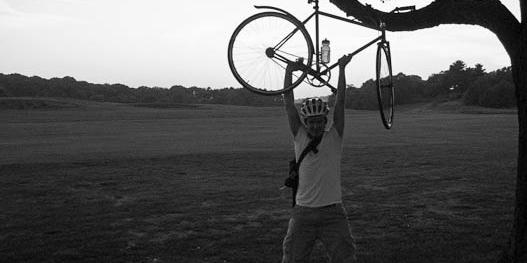
“I would guess the most widely used form of transportation in Boston is the subway system,” he says. “Probably the subway and cars are compet ing for the most widely used, and cycling is a close third,” Ledellaytner explains.

Boston’s outskirt geography and layout is not so far off from that of Durham, so it’s no surprise that the two towns share a few transportation similarities. But as we move into bigger cities, owning a car becomes more and more obsolete. New York City is well -known for its yellow cab system, but this system has since grown to a much more complex plethora of options to meet your transportation needs. From Uber (a popular car service allowing users to hail cabs via iPhone), to yel low cabs, to green cabs, to car rentals, bike rentals, subways and busses, one is never without vehicle access in the Big Apple. Curve Baptiste, an Entrepreneur currently living in Manhattan’s Lower East Side generally uses all forms of transportation that the city has to offer, but does not own a car.


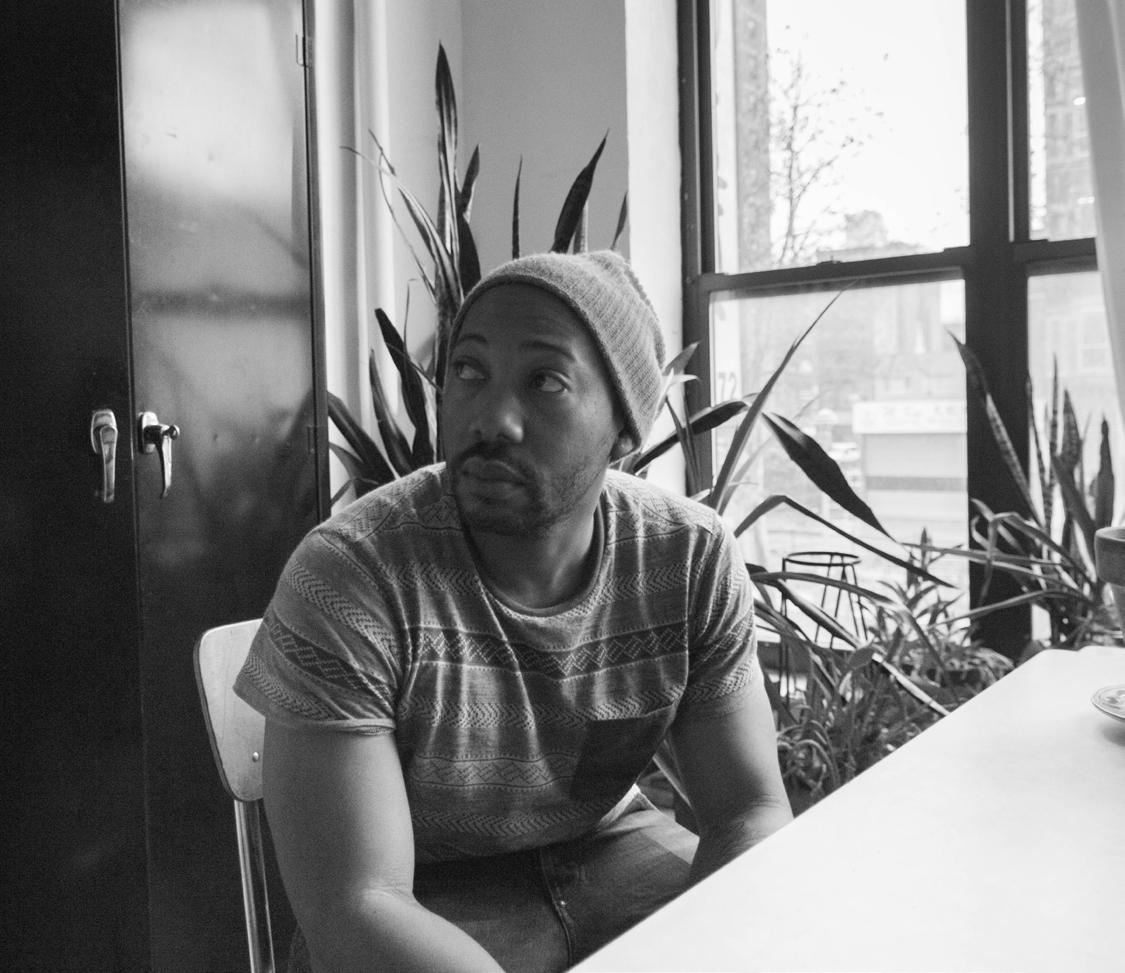
“Living in New York, the only time you really need a car is if you’re pick ing something up that is very large, or if you want to go out of the city,” says Baptiste. “I’m a frequent weekend trav eler, and if there isn’t a train that goes there, I would look into getting a rental
car,” he Baptiste explains. In New York City, owning a car is actually a rare occurrence, due to the inconveniences faced by car drivers. “To park a car down here is around $350- $375 per month, so who really wants to drive a car?” Baptiste says.
“I bike a lot, and whenever I’m not biking, I find myself using the train,” he explains. As someone who has seen the taxi community of NYC grow, Baptiste has noticed a huge increase in the use of Uber around New York. “I think the fact that you can be in an apartment, call for a car, and actually be able to track that car will create a higher need for this type of on demand transportation,” explains Baptiste.
Baptiste attributes a lot of Uber’s popularity to the fact that users can know exactly when their transportation will arrive, which is something that the subway system often lacks. “I guarantee you that if there was a survey done, people would say they feel more relaxed know ing when their transportation will come,” Bap tiste explains.
Perhaps the residents of Durham are far away from seeing streets filled with Ubers and yel low cabs, but the public transportation in this country, as well as the way people view it is changing. Cars are really no longer the most used form of transportation, and more modern methods have been adopted. Maybe this is one of the overlooked methods of reducing net car bon emissions, or maybe people just seek out alternative transportation for of enjoyment or convenience. Nonetheless, the ways in which humans get from place to place is undergoing huge change, as systems of public transporta tion expand. When the weather warms, don’t be afraid to leave the car at home and take a more economical method of getting around.
Sam Colby Co- Editor in Chief
Left: *Baptiste in his apartment, Lower East Side Manhat tan. *Boston’s MBTA system Right: *Avery-Leaf on his Puch Magnum *A NYC Yellow Cab *Ledellaytner and his bicycle (image courtesy of Ledellaytner)
19 OP~ED
Internet access is something that should be gauranteed to students during the school day. Whether it’s through a computer, smart phone, or tablet, students are free to access social media and other websites at any given moment. That is, if you’re not connected to the school’s Wi-Fi network.
Many high school students, myself included, would argue that there are many websites out there that can be used for research but are instead blocked by the school district’s content filter. “For Debate and Persuasion I was writing a debate on the legalization of marijuana, but all of the websites regarding that topic were blocked,” says senior Brendan McK enna. “I couldn’t do any of my research in school which kind of gave me a disadvantage during class time when we were allowed to do research,” concludes McKenna.

“The Oyster River School District currently uses a content filter from Lightspeed Systems. The filter was designed for education, and the company only sells to education,” says Joshua Olstad, the head of the IT department for ORCSD. “The system is tiered so that different levels of filtering can be applied for different groups. For example, we can allow the teachers access to more websites than the students or allow the prin cipal access to even more. The system also provides logs, so if a student was researching how to create a bomb, the principal could then talk to the student,” explains Olstad.

Students also tend to groan at the fact that Instagram, Snapchat, Tumblr, and other social media are blocked while sources such as Facebook and Twitter are not. “I know social media can be a distraction, but I don’t see why Facebook and Twitter are allowed on the school Wi-Fi but Instagram isn’t,” says senior Jake Aldrich. McKenna has a similar opinion. “I tried to show my photography teacher some cool photos on my Instagram, but I couldn’t because it’s blocked,” shares McKenna.
“Facebook and Twitter have been a tool that students and teachers can use to communicate with each other, but Instagram and Snapchat don’t have much of an educational purpose and can also be used for bullying and harrassing,” says ORHS principal, Todd Allen. “We want technology to be used as a tool, not a distraction,” Allen adds.
“I don’t even think cyber bullying can exist on Instagram or Snapchat,” says ORHS junior, Phil Ameduri. “It’s only pictures,” he adds.
Personally yes, I do think social media can be a distraction, but it depends on when you are using it. If it’s in the middle of class during a lesson, and you decide to check Facebook or Twitter, then yes it’s a dis traction, and is also rude to the teacher. But when it’s the end of class and there are a couple of minutes before the bell rings, or in-between classes, or during a free period, I personally would like to check my Instagram because it’s interesting.
“We don’t want to promote social media as a use of your time, while the sole purpose of you being here is to learn,” says Allen.
“Most schools that I’ve worked for block all social networking sites and any sites that tends to be high in bandwidth like YouTube. ORCSD is dif ferent and we do keep these sites open for students,” adds Olstad.
“I think we tend to be a lot more liberal when it comes to website censor ship, but I do believe that there are many websites that can be useful but are blocked. I’d like to see if the high school could have its own content fil ter separate from the middle school and elementary schools,” says Kathy Pearce, the High School Librarian.
“The main reason that we filter is to be in compliance with the Chil dren’s Internet Protection Act (CIPA). Basically CIPA protects students from accessing adult material that contains pornography, violence, or other inappropriate content,” says Olstad.
I agree with Pearce that it would be neat if the high school had its own content filter separate from the middle school and elementary schools rather than one shared content filter. High school students are mature enough to view websites regarding controversial topics like drugs or vio lence in the event of a research paper or school related purpose.
Robert Quaglieri, the high school health teacher, teaches students many sensitive topics that could appear blocked on the school’s network like drugs, alcohol, and STD’s. “When I have my students researching these topics for projects, I provide them with the recourses that they can use, and that I know are appropriate,” says Quaglieri.
If the school unblocked social media websites, I think students would be able to recognize an appropriate time to use it. Most teachers in the school don’t even allow kids on their cell phones during class, which is how most students are accessing these websites.
Along with the many freedoms that Oys ter River has to offer including free periods and open campus, I think we should be trusted with the internet [just as much as we are with our other given freedoms.]
Jake Garner Circulation Manager
The Restrictions of ORHS Wi-Fi
#NoFilter
20 OP~ED
(Photo drawn by ORHS senior, Austin O’Rourke)
Making a List, and Checking it More Than Twice
Tis’
the season to want to pull your hair out in frustration. No, I don’t mean last minute Christmas shopping adventures or Black Friday deals, I mean regular decision Janu ary 1st deadlines, essays, teacher rec ommendations, and application fees which are just a few things that the seniors at Oyster River High School are stressing out about.
Running around like chickens with our heads cut off is the new thing when it comes to the first half of senior year. “We’ve got our normal school work, extracurricular [ac tivities], and then all of this college stuff that has to be done. It’s crazy,” said senior Samantha Stewart. Kim Sekera, a councelor for Oyster Riv er High School explained that this is the most stressful time for senior students. “Besides the obvious abun dance of work that students have to balance, little things play a big role in the stress factor when it comes to completing the stuff for college ad mittance,” said Sekera. She went on to explain that students assume too much, and go to the extremes when thinking about what colleges are looking for. “It’s like, I go through Naviance with my counselor and look at all of the numbers and stats for test scores and GPA’s, and I worry that because mine might not be above what [colleges] want could be a huge contribution on why they might not accept me,” said senior Alex Caval laro. Numbers, grades, and scores. That was my main concern too, much like many of the senior students at ORHS. I mean, isn’t that all you hear about? The super importance of your GPA, and how high you scored on SAT’s are what colleges really look at. Or are they? [That’s the real question that students want the answer to.]
Well, look no further. I understand the frustration and worry a lot of students have when thinking about whether or not they have what it takes to make it into their college choices, so I went ahead and con tacted a few college admissions and asked them what they look at when going through applications. Their answers might surprise you.
The Hunt for Future Students: Admissions’ Perspective
What People Think We’re Looking At: What We ARE Looking At:

• GPA: If my GPA is lower than the average freshman GPA for the college I’m looking to apply to my chances of actually getting in aren’t as great.
• SAT/ACT: These scores are treated a lot like my GPA, if they aren’t with or above the average college freshman scores then it reduces my chances of getting in.
• Essay: This has to be extremely well written, and what they want to hear even though it’s about me. It has to be full of meaning, and some dramatic breakthrough that I had in my life.
• Grades: I got a C one time in this class that I took, because I’m not a very good test taker and that was a majority of the class. But the college doesn’t know that, so this could alter how they think I do in school and possibly reduce my chances of getting in.
• Everything listed above are things colleges look at, and they do weigh in to whether or not you get accepted. That isn’t a lie. However, just because your GPA is a little lower, or your SAT/ACT scores aren’t as high doesn’t mean the student will not get accepted. Unless you don’t apply yourself at all, and your scores are ridiculously low without explanation or reasoning behind it.
• GPA: “Your GPA is important, and we do look at it. If it’s extremely high for whatever your scale is for your particular school, then we look into what class es you take. If a student has a 3.9 out of 4 GPA, but took courses that grant an easy A, they actually have a lesser chance than a student that has a GPA below the average we listed but takes rigorous courses,” explained Boston University admissions director John McEachern.
• SAT/ACT’s: “We do take a look at student’s test scores, but we don’t solely as sess the individual on that. Not everyone is an amazing test taker. I definitely wasn’t. If it’s high, great! If not, well then we ask the student about that. We give them a chance to explain that it’s something they struggle with, and we give them the opportunity to show us what they are strong with. Most of the time their other strengths are more important with what they want to go into than how they take a standardized test,” said Denver State admissions director Craig Dionne.
• Essay: “Do not, do not, do not just give what you think colleges want to hear. I can’t stress that enough. We know when you’re doing it, and it doesn’t put you in a good position. The essays are meant for us to get to know who you are, we want it personal and true,” said Northeastern University’s assistant director of admissions Lauren Thornton.
• Grades: “Grades are put together with how rigorous your courses are. You can take easy classes and get straight A’s, but that doesn’t look good to us. We’d much rather have you get B’s in hard classes,” McEachern said.
Kirsten Weiker Sports Editor
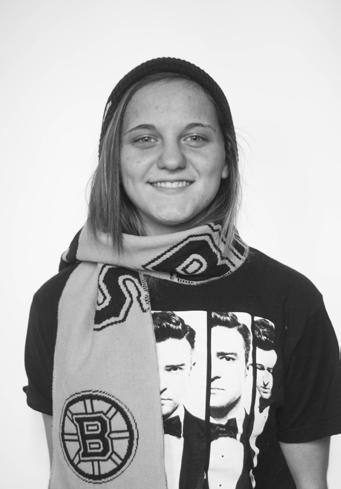
Something that the admissions directors wanted to add was that they look at you as an individual as well. They look at what your strong suits are, as well as your weak, because this could explain why someone does better in one section than another. It’s not completely about numbers, grades, and test scores.
I hope that this can relieve some stress for other students, because this knowl edge sure did help for me. If you’re done applying, I hope you make it into the school you’re hoping for. If you’ve been accepted, congratulations!
21 OP~ED
How To Help
MOR’s Mental Health Column
If you can’t think of someone off the top of your head who has had to deal with an eating disorder, depres sion, self-harm, or another mental dis order, then you probably aren’t paying close enough attention. There are signs and symptoms of mental disorders, and because the people struggling with such things will probably be too consumed by their illness to ask for aid, their friends and family have to be attentive to any changes in their behavior that may suggest a decline in their mental health.
You are probably familiar with the typical signs. There are physical as pects of eating disorders and self-harm in particular that most can recog nize. Underlying depression, anxiety, stress, and loneliness are at the root of most of these disorders, and emotions such as those are much harder to detect. However there are many people who although have not been plagued with mental disorders themselves, have been affected by the suf fering of those close to them. It is so important that you and your peers are healthy and happy, but if we don’t all concern ourselves with each other’s well-being then no one will ever get the help they may be in desperate need of.

Oyster River junior Phil Ameduri knows firsthand what it’s like to care about someone who is struggling with a mental disorder. “My sister has struggled with [an eating disorder] in the past and still somewhat to this day,” shared Ameduri. “I’d say I’m a lot more conscious of the signs of an eating disorder.” Although his parents tried to help their daugher, Amed uri felt that “their approach was a little too harsh because of fears they had.” When Ameduri became aware of his sister’s struggle, he spent time trying to help her work out what underlying problems were causing her to struggle with bulimia. “I understood that there’s only so much reason that can be brought to an eating disorder, but being the black and white thinker I am, I thought it was very important to help her work through
can. “The friends have to step up first,” concludes Quaglieri, “everybody at some point has to deal with them [mental disorders].”

If you’re not sure how to support an individual who is struggling with a mental disorder, I’ve found some sources outside of the Oyster River com munity that have some sound advice to share. Erin Butterfield of Boston, Massachusetts has struggled with an eating disorder and severe anxiety herself, and since recovering she has become a great supporter of others who struggle. “I react with love and understanding when I find out about someone’s struggle because I myself struggle with my own mental illness es,” shares Butterfield. “It is not my place to make anyone seek help, how ever I have encouraged my friends to see therapists or call hotlines. I do it in a concerned friend way, not in an angry way,” concludes Butterfield.
San Diego inhabitant Spencer Wollan adds what she believes to be an essential part to supporting someone who is having trouble maintaining a healthy mental mindset/lifestyle. “Be active in showing care and concern if someone needs help,” says Wollan. “Referring therapists is always a good idea, and not just sending them away somewhere. Work with the person to balance what they want with what they need.”
So make yourself available and a supportive source for those who need it. They will undoubtedly be grateful to you for your concern and love, al though they may not be able to vocalize that gratitude until they’ve gotten healthy.
some of the reasons,” he said. “My sister and I actually got closer over this time,” he added.
ORHS junior Cheyane Milano can relate to Ameduri’s experiences. “A few of my closest friends have suffered from different mental disorders,” shared Milano. “It was so hard to watch one of my best friends struggle the way she did, and I did as much as I could.” Milano spent time sleeping over at her friend’s house [even on school nights] just to make sure she was safe. “She honestly couldn’t even see her self worth and it was horrible. I was so scared I was going to lose her. It was one of the scariest things I have ever experienced.” Sadly Milano’s experience is all too common, and it shows just how much others are affected by their friend’s and family’s struggles.
Robert Quaglieri, the Oyster River High School health teacher, thinks that “peers have so much influence on their peers in a positive way.” This really speaks to how important it is for the friends and families of people with mental disorders to help them and support them in any way they
“It is not my place to make anyone seek help, however I have encouraged my friends to see therapists or call hotlines.”
-Erin Butterfield
22 OP~ED
Madi Pelletier-Murrill Op-Ed Editor
Who am I?

Tothe reader: I want you to take a step back for a moment and think about how it’s already half way through whatever year you are currently in. Whether it be your freshman year, or your senior year, think about how it’s already half-way over. I know that younger stu dents might find this exciting, how they’re that much closer to graduating or how they’re moving up the ladder that makes up high school. I was the same way when I was a freshman, sophomore, and even a junior. However, I can tell you now, first-hand, as a senior that the excitement fades- and fast. I’m not saying that I’m unexcited for college or my future, but let me tell you: it’s a huge jump. I know that this is going to sound really cliche, but I wish that I had taken the time to sit back from my busy lifestyle, and appreciate my previous years.
coming to a close. “I mean, I did look back when I had my last race and think, wow, that’s it for me with my [cross country] season, but I’m still excited and looking forward to leaving [high school],” said senior Adele Ziemek. “Four years of this and you’re just kind of done, you know?”
“I’m not saying I want to do it all over again, because that’s definitely not the case. But there are some things that I wish I appreciated more,” said Dominique LaPanne, junior at Oyster River High School. This is something I totally agree with. As a senior, I can tell you that I don’t want to start all over with my freshman year of high school in order to re-appreciate what I’ve now realized I missed. I think that my classmates would agree. But making varsity my freshman year, and doing extremely well in a class I thought I would fail, are both situations that I wish I had had a higher appreciation of in the moment. “I remember when I got my first acceptance letter for one of the colleges I applied to, and I was super excited. But then I realized that this was it, high school was over for me. [The] friends I made through sports and classes, the teachers I bonded with, they were all going a different way than I, and it just made me realize that I didn’t take advan tage of the time I had with these people. This was something I hoped to fix as a freshman in college. Like a new slate for me. So that’s exactly what I did,” said alumna Corey Scarano.

Everyone will have a trigger event that could cause this reflection. Whether it be your teacher reminding you of quarter deadlines, or writing in your agenda book and getting a glance at what day it actually is. For me, it was my last game of my high school soccer career. After the loss that we experienced in quarter finals, the thought of winning next year popped into my head, quickly followed by the realization that I wouldn’t be playing for the Oyster River Bob cats anymore. I know that younger students, club members, and athletes will have next year. Just know that this won’t always be the case. One day you’ll do exactly what I did at the end of that second quarter finals game: you’ll think you have next year but then realize that you won’t be coming back to high school.
Now I’m not saying that everyone will come to this recognition and wish they did more. Some students have the reflection moment and still feel the same way about their high school years

It’s also good to remember that your high school doesn’t just disappear after you graduate. Many past students enjoy com ing back when they are in the area to visit teachers and staff that they were close to. “I love coming back and sharing my endeav ors with some of my old teachers,” alum Ned Clark shared. This however is not true for everyone, there are some students that don’t want to go back and socialize with their past educators.
Whatever you choose to do is ultimately up to you. I just hope that you take some thing away from this, and learn to appre ciate your achievements throughout your high school career. Also, don’t forget the lows that come with all of the highs in your life, and the lessons you learn will mean a lot in the future.
Kirsten Weiker Sports Editor

“[The] friends I made through sports and classes, the teachers I bonded with; they were all going a different way than I, and it just made me realize that I didn’t take advantage of the time I had with these people.”
-Corey Scarano
23 OP~ED
Boys Basketball Team:
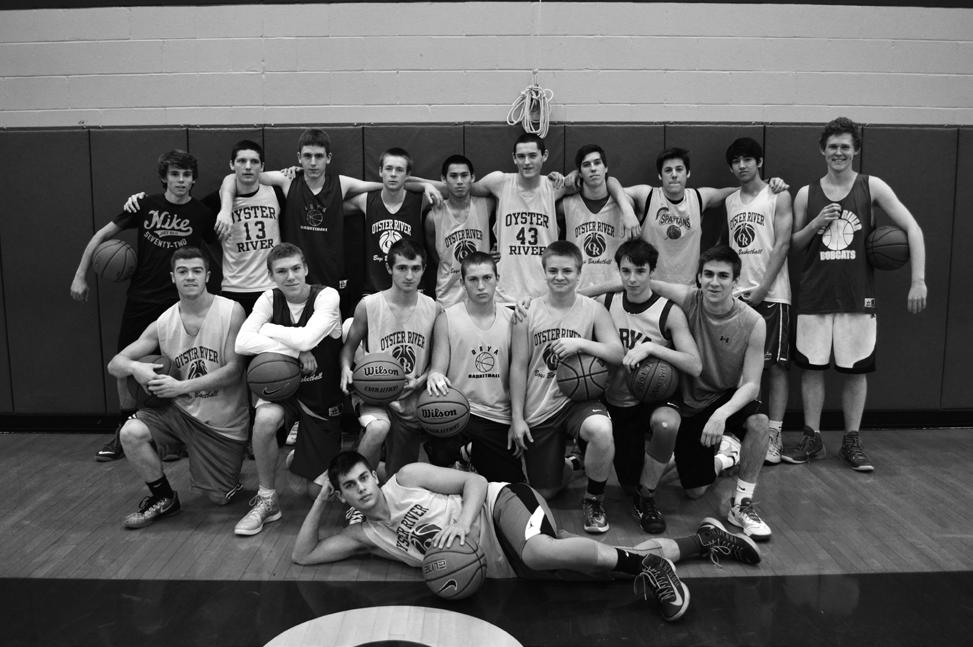
“Lorne Lucas is new, but knows exactly what we need to do to be a more cohesive team. He wants a team that can run the floor,” said senior Josh Fenerty. The boys always blast music in the lock er room and create and warm up CD that gets them and their fans “hyphy.” The team has a lot of experienced seniors who know the ropes, and the players have a lot of versatility this year. “We have a lot of young potential, and I really think we have a good shot of going deep into the playoffs because of the talent and chemistry our team has,” continued Fenerty. “Every team is a big game for us. We will decide how the year will go based off the team’s work ethic and chemistry, we already know the game plan: outrun the other teams,” said Chris Clement.
Winter Sport
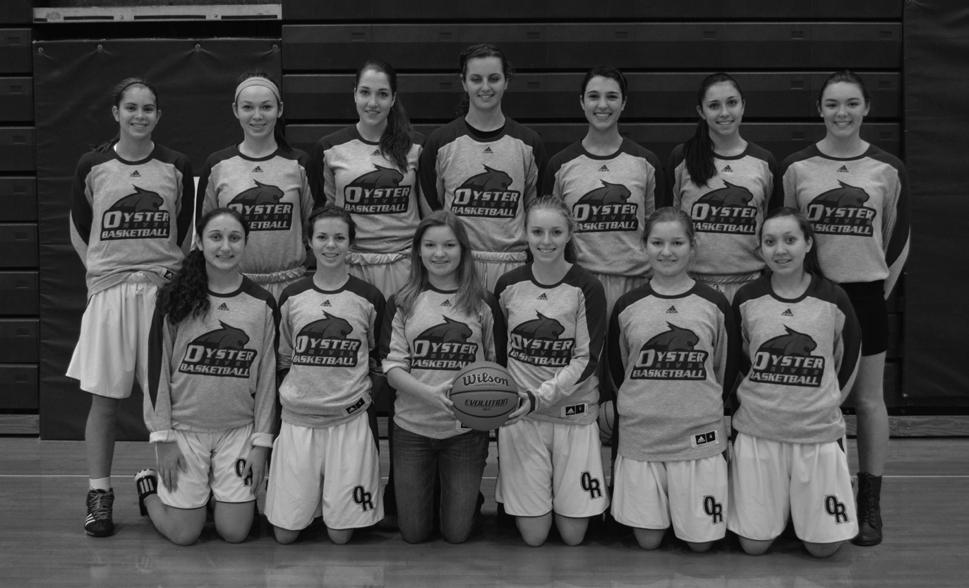
Girls Basketball Team:
“This season for the girls is going to be a change in dynamics for the whole team,” said senior Alex Morrell. After losing the majority of their height last year, the team is now focusing on speed and agility. Coach Dave Burrows is having the team do extra condi tioning, and is making sure the girls work extra hard to compen sate for their lack of height. The girls are still full of talent though. This year for the first few weeks, the team worked with a program called Integrity Hoops. The main coach in the program is one of the coaches for the NBA team, the Oklahoma City Thunder. ”There were some very famous players on that team. It was amazing to work with their coach. He showed us new drills that have made us much better,” said Morrell.
Swim Team:
The swim team is back and ready to win another state champi onship for OR. The girls team will be returning state champs this year, and even though they lost some great seniors there are many athletes that are stepping up to the plate. “We are training harder than ever. The fact that we are returning state champs doesn’t matter. Other teams get stronger, so we are preparing for that,” said Bill Reeves, swim team coach for OR. Even though the team trains hard, they know how to have fun as well. “11 hour meets can get long so we stare down the competition, and entertain ourselves by messing with the other teams,” said Matt Jones, junior swimmer. “There are so many great swimmers that go unnoticed, but the two that deserve a shout out are Matt Jones and Syndee Aubin,” said Brian Stevens another junior on the team. Be sure to look out for the swim team this year while they work towards defending their title.
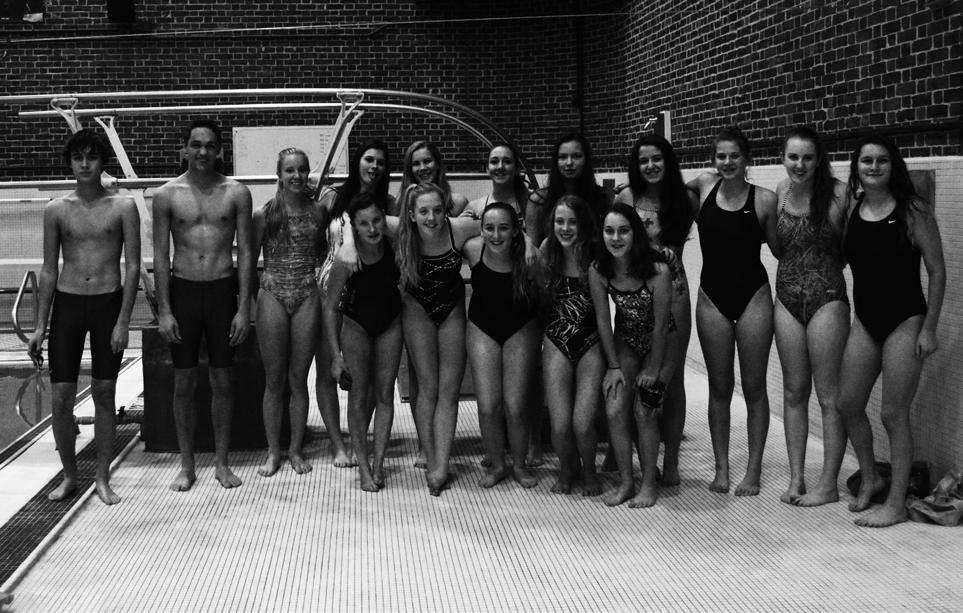
Girls Hockey Team:
The girls hockey team has lost a lot of their big players over the years, but they continue to focus on each other, having fun and continuing to practice on speed instead of strength. “If we can be the fastest team in the league, then the other team’s strength won’t really matter,” said senior Haley Bisson. The team has a great core group of girls who are helping the younger athletes reach their full potential. “I think that we could have a chance this year. We may struggle but I feel like we have very strong goaltending which is important,” said Bisson.
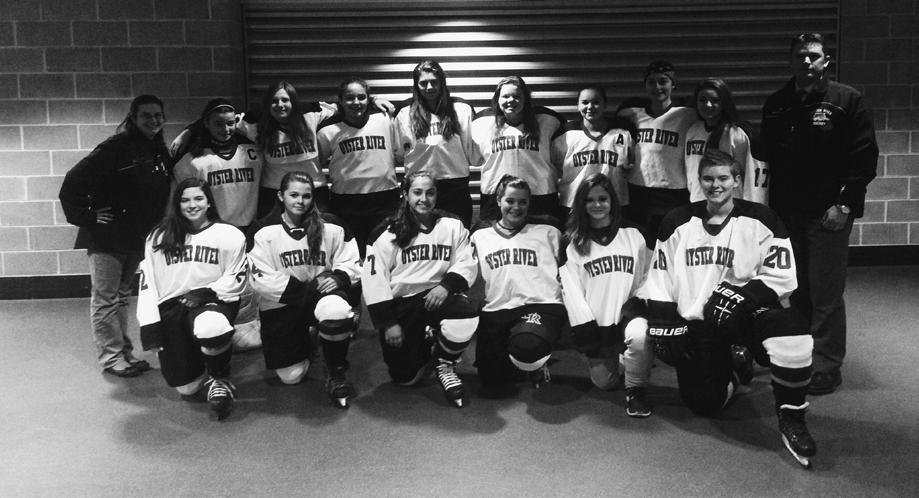
24 SPORTS & CLUBS
Biographies
Ski Team:
Skiing is very different from the other sports at OR. The team travels up north to Gunstock Mountain and other various moun tains around the state for practices. “Alpine skiing is a very men tal sport so we do whatever we can to get in the right mindset,” said Liam O’Rourke, senior and captain for the team. “We listen to music on the bus and cheer on teammates from the sidelines,” continued O’Rourke. The team spends a lot of time together and is a very tight knit group. O’Rourke and the team are planning for another great season this year. “Since my freshman year, the whole team has been improving. We have lost some good seniors, but we also have several underclassman ready to step up to varsi ty,” said O’Rourke. Ned Clarke, former ski team athlete and cur rent assistant coach, is excited about the upcoming season. “The program is continuing to strengthen itself by great student ath letes, and the team’s success,” said Clarke.
Boys Hockey Team:
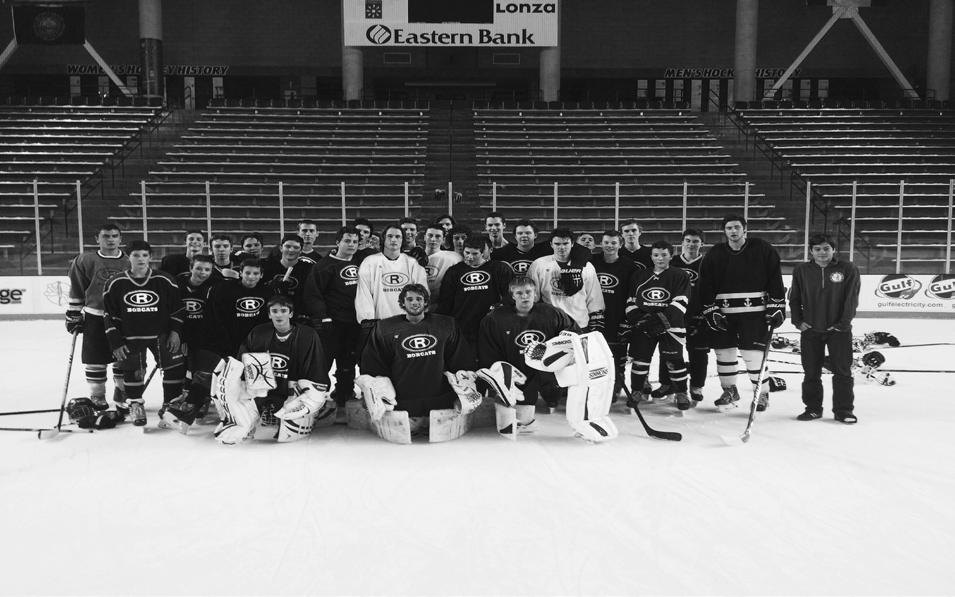
“We have a young team this year, that lacks experience, but we have a core group of veteran players that are expected to pull their weight on the team,” said Griff Richard, head coach of the hockey team. “We have some great goaltending from Mike Doyon which is crucial, and a lot of fast kids on offense,” said Jordan “Petro”, senior and captain of the team. The team’s key games are against Spaulding, Bow, and Dover. “If we focus on working as a team, then I think that we can do great things. Our team dynamic is crucial, and if we keep a good mentality we can do some great things,” said Conor Deptula, senior and one of the assistant cap tains.

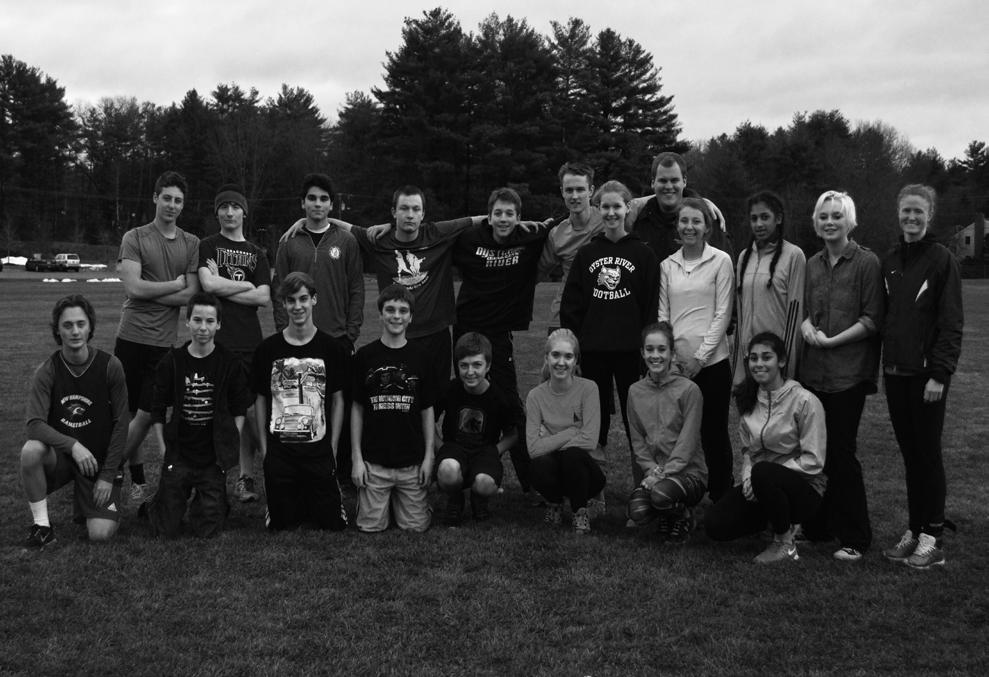

Track Team:
“The team dynamics for the boys and girls are very different this year. On the girls team there are a couple lead point scorers who motivate the other girls, whereas on the boys side everyone needs to be a team play er since there are fewer big point scorers,” said Evan Gordon, junior on the team. Practices are designed to let everyone focus on their strengths to get better at all the events track includes. Although winter track is taken every bit as seriously as outdoor track, for most students it is just a build up for their outdoor season. “I look forward to indoor. It’s a nice change from cross country, the events are much different and it’s fun being with a whole other group of kids,” continued Gordon. Each season the team gets better and bonds a lot. “Every season is fun and I’m going to miss it when I’m gone. Our coach has intense workouts, and it’s personally why I do track,” said Alana Saravong, senior on the team.
Haley Parry Business Manager
25 SPORTS & CLUBS
NaNoWriMo
A P A ge A D A y
“It was a great way to encourage students to write that novel that they have been planning. Within the boundaries of NaNoWriMo, students can set goals and actually accomplish them,” explained Conrad Dundorf, a junior at ORHS. “In retro spective, it was a helpful program for writers my age.”
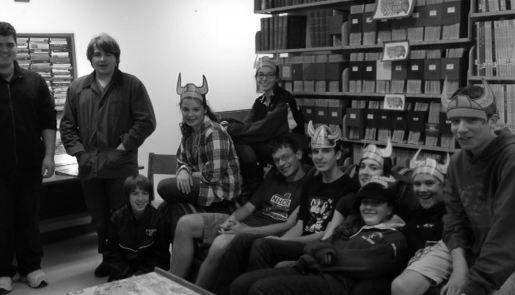


On Thursday, November 13th, a “meet the author” event was held in the library of Oyster River High School. The meeting featured Catherine Geiger, a one-year alumna of ORHS, who returned to discuss her recently published book, The Witch Market. The event was open to the public, and a little over 20 students, teachers, and aspiring writers came to ask questions and listen to Geiger’s brief excerpt readings.
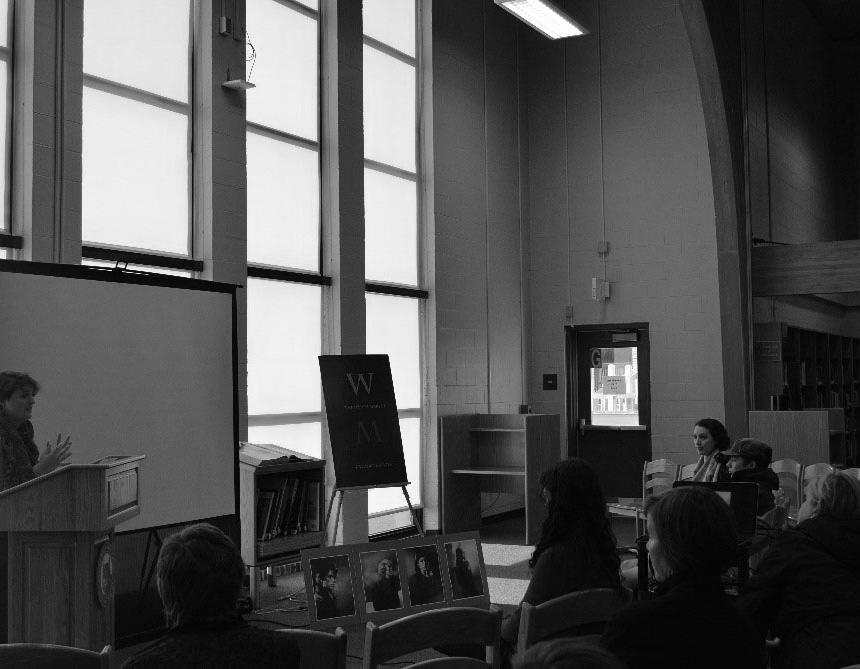
Kathy Pearce, a librarian at ORHS, helped plan the appearance. “I think it’s helpful for other young writers that perhaps strive to have their own book published one day.” Along with Elliot Moore (another ORHS librarian), Pearce has been recently organizing an after-school club based off of the popular annual movement “NaNoWriMo”, short for National Novel Writing Month. “The pur pose [of NaNoWriMo] is not only to inspire our creative youth, but also just for fun. It’s a kick in the pants to anyone who’s ever given it thought, but never really gotten around to it,” explained Moore. The program encourages its participants to attempt to write an en tire novel in one month by progressively working at it in constant intervals - which is precisely what the club focuses on.
The work is measurable too: for every word written by any mem ber, the club’s accumulated word count increases, which is then transferred onto NaNoWriMo’s website by Pearce or Moore. “We’re actually in competition with another local school right now,” said Pearce as she projected the results from her laptop. “The idea is in ternational, and there are thousands of amazing authors that went undiscovered until they had participated.” The home page boasts over 300 million total words, and the amount is continuing to rise.
Although Geiger had never partaken in the club or movement herself, she did, however, offer helpful writing advice to many of
the members of the club for reference in the creation of their own novels. “I don’t move on unless I’m satisfied with my work- I get hung up on it,” she said to group of club members gathered at the meeting. “Lots of my best scenes had a deep resonance - and that can hit me hard emotionally.” Geiger went on to add that she does very much support the idea behind NaNoWriMo, and encourages student writing.
Emily Croot, a senior at ORHS who took part in the club, was the only member to successfully write an entire novel in the 30 day period. “I absolutely loved it!” said Croot, in response to whether or not she though it was worthwhile. “Mrs. Pearce and Mrs. Moore were very supportive with letting us use the back room, schedul ing author visits, and meeting with UNH students for help!” Croot then added her recommendation to hesitant students: “It was a great experience and I learned a lot about myself through writing. Even if somebody thinks they might not have enough time, and can only manage a few hundred words throughout the month, it’s great setting a word count goal, working to achieve it-even if it may seem daunting and unattainable-and finally celebrating on December 1st!”
“The goal is just to access your inner creativity in writing. Some of us only got as far as an idea- and that’s great! Now they can go really develop something that they’re interested in.”
Pearce agreed. “The turn-out was overwhelming. We had so many more kids sign up than we had expected. Our goal was originally 30,000 words, and we ended up with roughly 100,000 for just our club alone.” Pearce then described the benefits of the program: “It’s worthwhile because it brings students together. Typically, writing is an isolated project, but this allowed a large group of individuals to all share literary ideas and advice amongst each other, and that’s exactly what we’re looking for.”
Forrest Spinney Co-Media Manager
The club members pose for a group picture
26
& CLUBS
Catherine Geiger at ORHS li brary
SPORTS
New Club on the Block Model United Nations Club
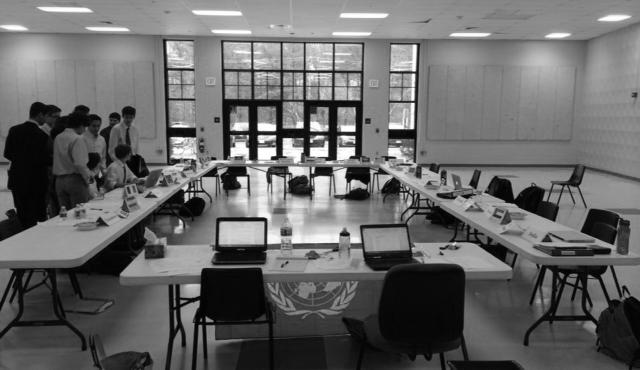
They meet every week, Monday after school. A group of twenty some-odd students gather in Gabrielle Anderson’s second floor social studies classroom to discuss global is sues. Model United Nations is the latest and greatest club that Oyster River High School has to offer, and it has plenty to teach its attendees. Although the club is a new and novel idea to Oyster River students, it is a national organization that is popular among high school and college students across the country. The program may have never made it to Oyster River however, if it weren’t for the driven and persistent Gigi Reece who is the student behind the club’s success. “I heard about it because my mom used to lead it,” shares Reece. “I asked my sister if it sounded like some thing students would want to do.” Reece says “[Model UN] is kind of about debating but also working together. You learn how other countries work.” Model UN primarily focuses on engaging high school students. “I think that it teaches good problem solving and people skills which are important aspects of the ‘real world’,” says Arabella Reece, an Oyster River junior. “You learn a lot about the world,” adds Reece, “and it has given me a better understanding of how the UN works.”
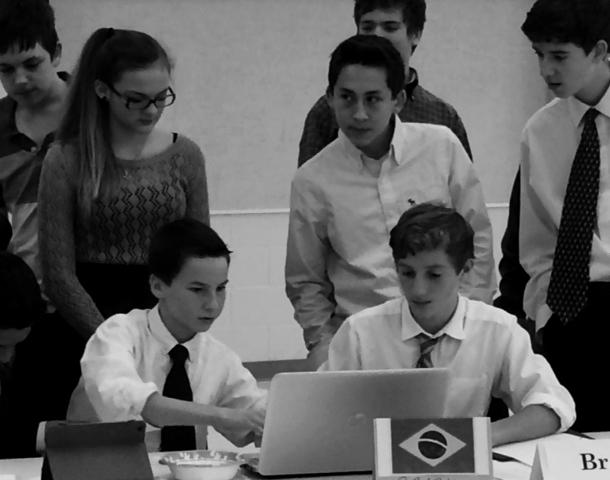
Julie Reece, Gigi and Arabella’s mother, has played a part in the forma tion and inner workings of the club as well. “Model UN was her idea. She loves history,” says Julie about Gigi. “[Gigi] is a freshman this year, so I just asked Ms. Sekera how we could get a club started at the school. She suggested Gigi email social studies teacher Ms. Raiford. Gigi did and Ms. Raiford emailed back that we have a new teacher- Mrs. Anderson- who was the Model UN advisor at her old high school. Gigi got in touch with Mrs. Anderson, and I just offered to help in anyway that I could.”
Other students appreciate the primarily student-driven group as well. “It has helped me to think on my feet, a skill I need to improve on. At confer ences, you are speaking in front of a pretty big group of delegates so it has

through Model UN. “I have learned a lot about the issue of the militariza tion of the Arctic because that was my committee at our last conference. It is an issue I would have never thought about until I joined the club.”
Emily Olivier adds what she thinks makes the club so unique and attrac tive to the student body. “ If you really like hands on activities and politics than it’s so good for you. It really allows for students to get involved in their world and it’s not an unreasonable amount of work. It’s fun work too and the group of people are really nice and funny.” [Emily learned about Model UN from her teacher Gabrielle Anderson who is also the supervi sor of the Model UN club.]
Steph Schiavo heard about Model UN from a friend. “I have learned a lot more about world issues and also it has helped me to build better public speaking skills. I would definitely recommend it because the conferences are really fun and it’s a really great way to stay tuned in to world issues. It
helped my public speaking and confidence,” shares Kathryn Lanoue, an other junior who regularly attends the Model UN meetings. Lanoue adds a specific example of an global topic which she has learned more about
has prepared me for the real world because it has helped me to work on my research and public speaking skills,” says Schiavo.
Anderson adds why she believes that Model UN is such a great addition to the list of Oyster River extracurricular activities. “Students that partici pate in [the Model United Nations club] really improve their ability to talk in front of a group,” says Anderson. “It’s for students to basically learn about diplomacy, analyze global issues, and find solutions to these global issues.”
She feels that the club has really taken off and is attracting a dedicated group of students from varying ages and abil ities.
Although club members have already participated in two conferences this school year, one at Phillips Exeter Acade my and one at John Stark Regional High SchoolAnderson has big plans for the fu ture. As she puts it “we are getting our feet wet at smaller conferences,” with the purpose of attending larger ones soon. The club members will be attending an expansive conference in the spring at Plymouth State University, and next year she hopes to see them become part of an even larger event in Boston.
For now though, the students involved in Model UN are doing what they can to simply gain popularity and credibil ity. The group held a recent a fundraiser at Barnes and Noble on December 11th, where a portion of the proceeds obtained went towards the club’s funds.
“I have learned a lot about the issue of the militarization of the Arctic because that was my committee at our last conference. It is an issue I would have never thought about until I joined the club.” -Kathryn Lanoue
Madi Pelletier-Murrill Op-Ed Editor
Photo Credit: Etsie Ott
27
CLUBS
Photo Credit: Etsie Ott
SPORTS &












 Sadie Moore Co-Editor in Chief
Sadie Moore Co-Editor in Chief





 Abigail Colby Features Editor
Abigail Colby Features Editor


















 Haley Parry
Business Manager
Haley Parry
Business Manager
 Zephyr Jaeger News Editor
Zephyr Jaeger News Editor








































